John and Mary Kormendy: High Island 2025
This web site contains the pictures from our birding of the height of the Spring 2025 migration from April 21 to May 3. It is essentially finished, although I may add a few more pictures.
The purpose of this web site is to catalog our memories, not to showcase the trip for public readers. So I include pictures that are not very good when they document sightings that are important to us.
Birding at High Island was much less good in 2025 than in previous years. Some reasons are clear: At Smith Oaks, the people who manage the site built a wonderful elevated walkway that puts us up in the tree canopy with the birds, and we benefited from this enormously during our 2021 April trip to High Island. But they no longer allow tripods on the elevated walkway. So I could no longer take my 800 mm lens. In truth, a bigger problem was that there were fewer birds than usual, including at the elevated walkway. Probably there are many reasons. We fear that bird populations are crashing. The migration season seems to have shifted several days earlier. And it is possible that this year's weather favored overflight of High Island rather than landing there to feed. Also, as we age, we are less mobile. This does not change the problem on the elevated walkway, but we confined ourselves mostly to the main grandstand and drip area in Boy Scout Woods. And that is too far away from the birds to allow good pictures. So we enjoyed High Island and vicinity (Anahuac Wild Life Refuge -- officially renamed but not in this web site -- and the Bolivar Penninsula). But birding was muted compared to the best years. We got no new birds. The few possibilities were all difficult.
Trip Birds
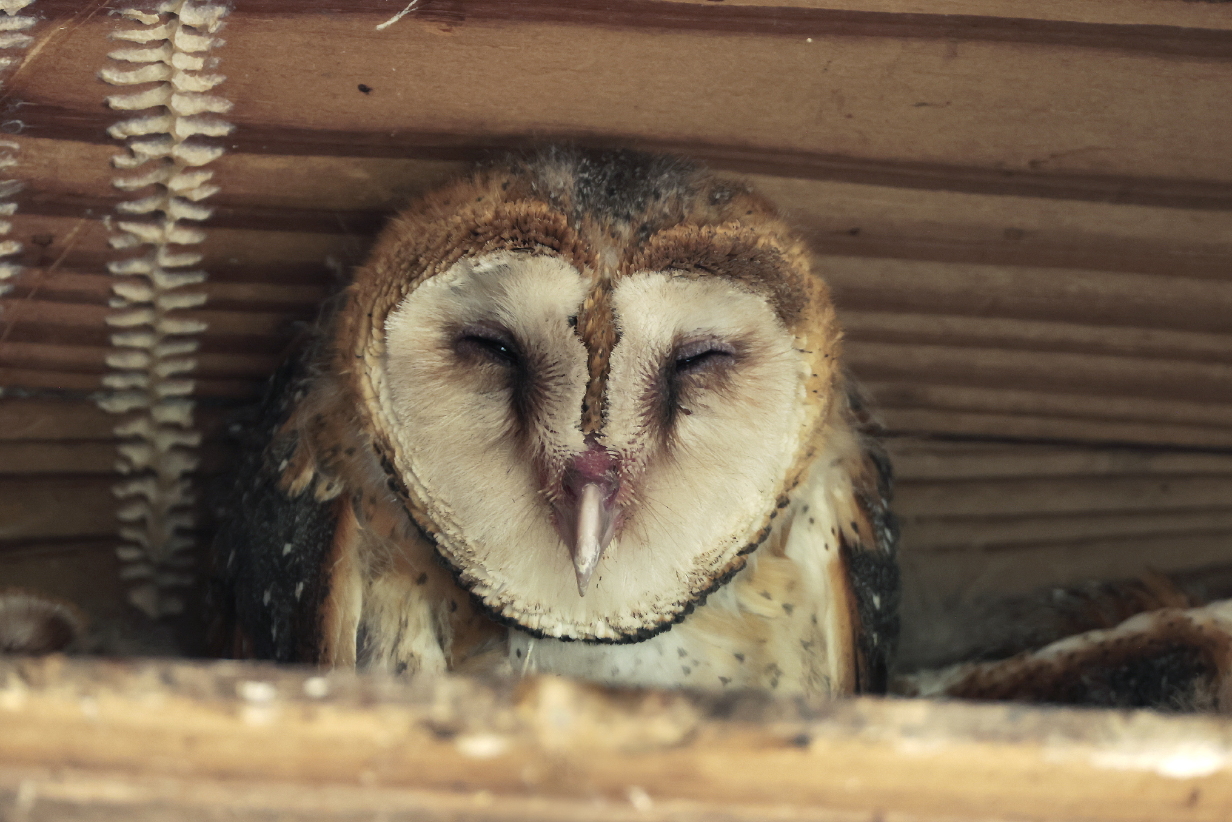
American barn owl is our trip bird. This adult and several chicks -- we saw 2 for sure -- roosted throughout our stay under the roof of a small pavilion at the entrance to Jocelyn Nungaray (formerly Anahuac) National Wildlife Refuge. I have done my best to get the color balance correct. This was the first time that we have seen American barn owl in North America. We got our life bird many years ago in Hawaii, where it is introduced and well established.
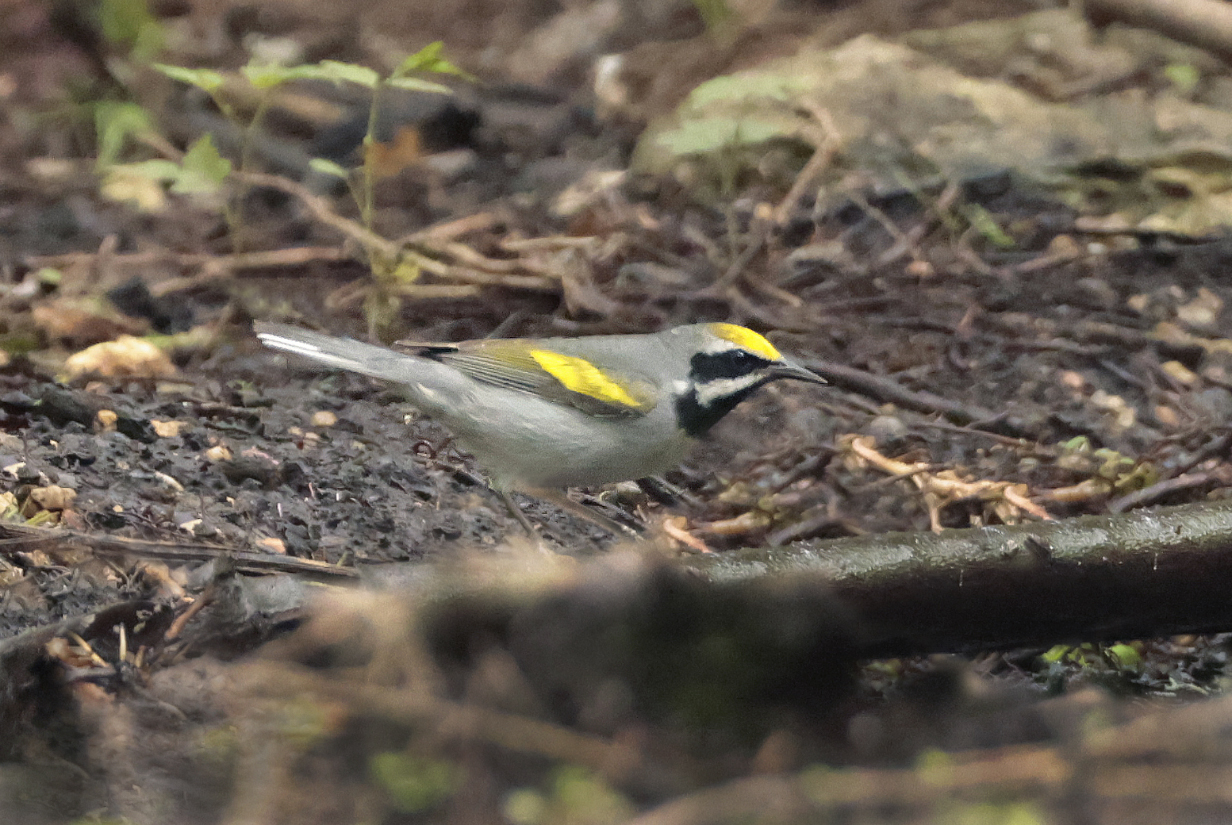
Golden-winged warbler was decisively the most gorgeous warbler that we saw -- our second trip bird. John saw it briefly on our first evening, and we both saw it again on May 2nd, when this picture was taken at the drip.
Grandstand and Drip Area, Boy Scout Woods

Grandstand and viewing area for the "drip bath" at Boy Scout Woods. The entrance from roadside parking is at left. The swampy pond at left-center is often good for fairly close birds, but there is no special "lure" in the form of a water drip. The water drip and its bathing pool are not visible from this spot but are directly in front of the viewing grandstand at extreme right. The drip area is too far for good photography but designed so that birds are not disturbed even when -- as often happens during busy times -- there are 50 or more birders near the grandstand. The drip area is also dark, which is good for the birds but a challenge for the photographer. Also challenging is the fact that tripods are allowed only on the far side of the grandstand, where Mary is sitting with my camera (see the second picture, below.) Scroll right to see the whole panorama.
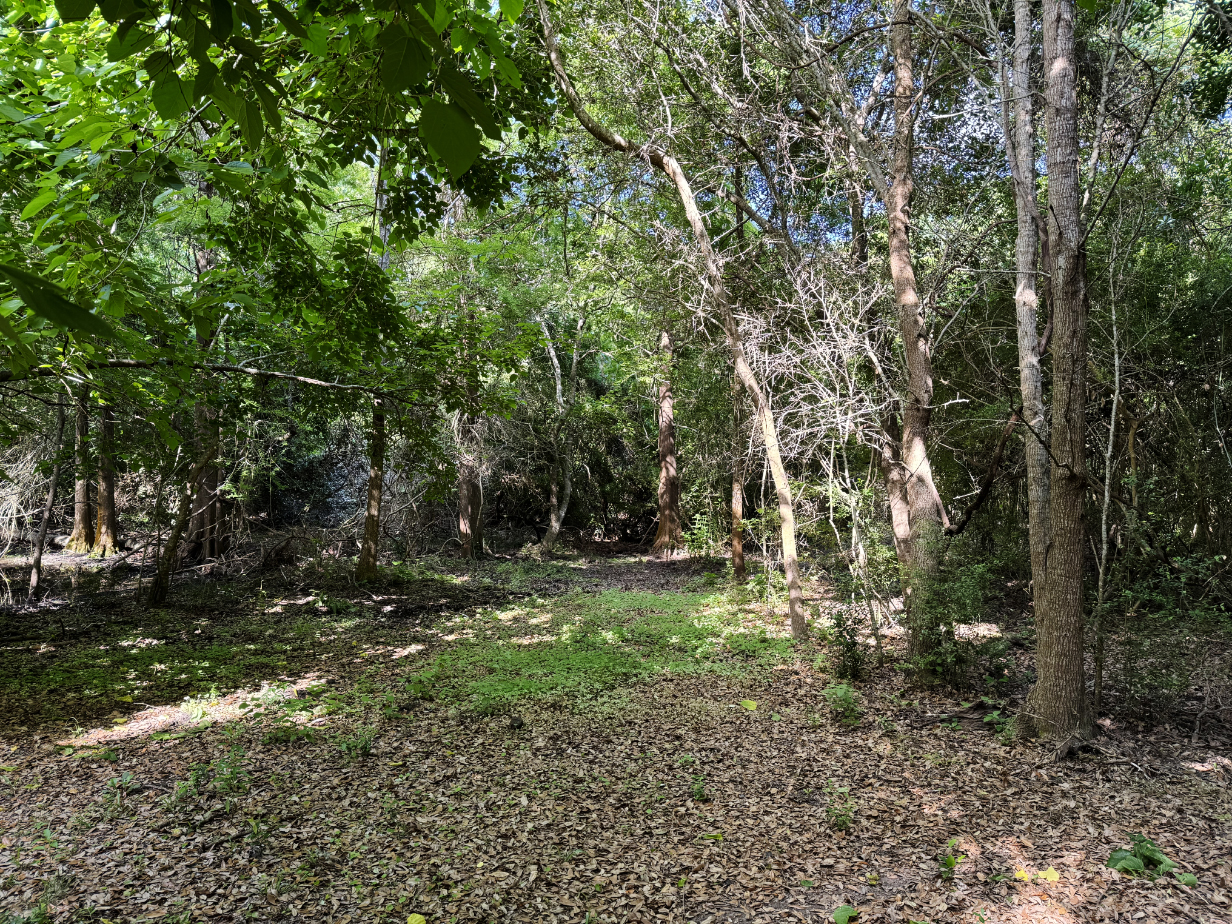
The water drip area at the viewing grandstand at Boy Scout Woods is just below center here, between the biggest cypress tree at its right and the double-trunk tree at its left.
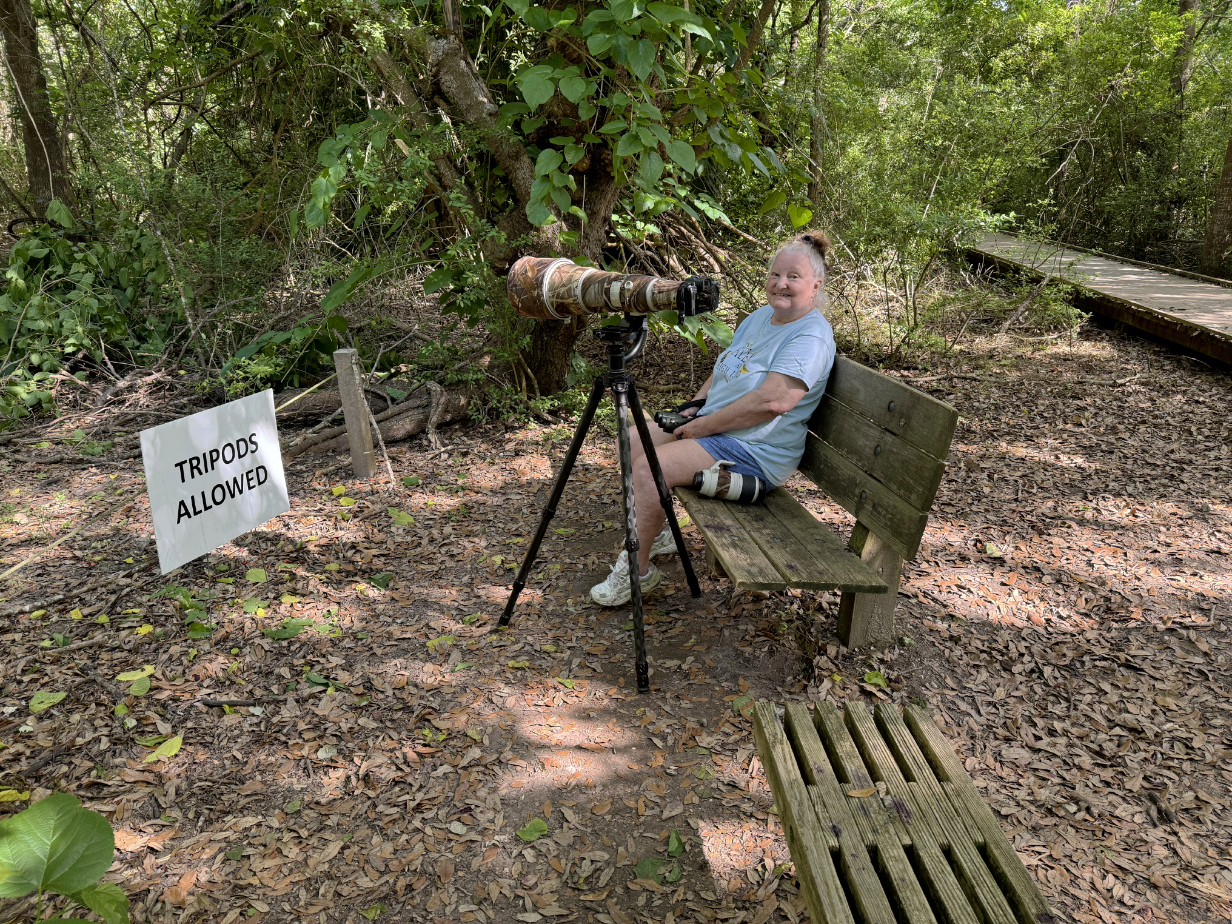
Mary at the viewing area where cameras on tripods are allowed. We spent a lot of time here. During rare busy periods, there can be half-a-dozen birds of several species at the drip. During quiet times (e. g., early morning), birds come as rarely as one every 10-20 minutes. Almost always, the most common birds are the resident Gray catbirds and Northern cardinals.
The Birds
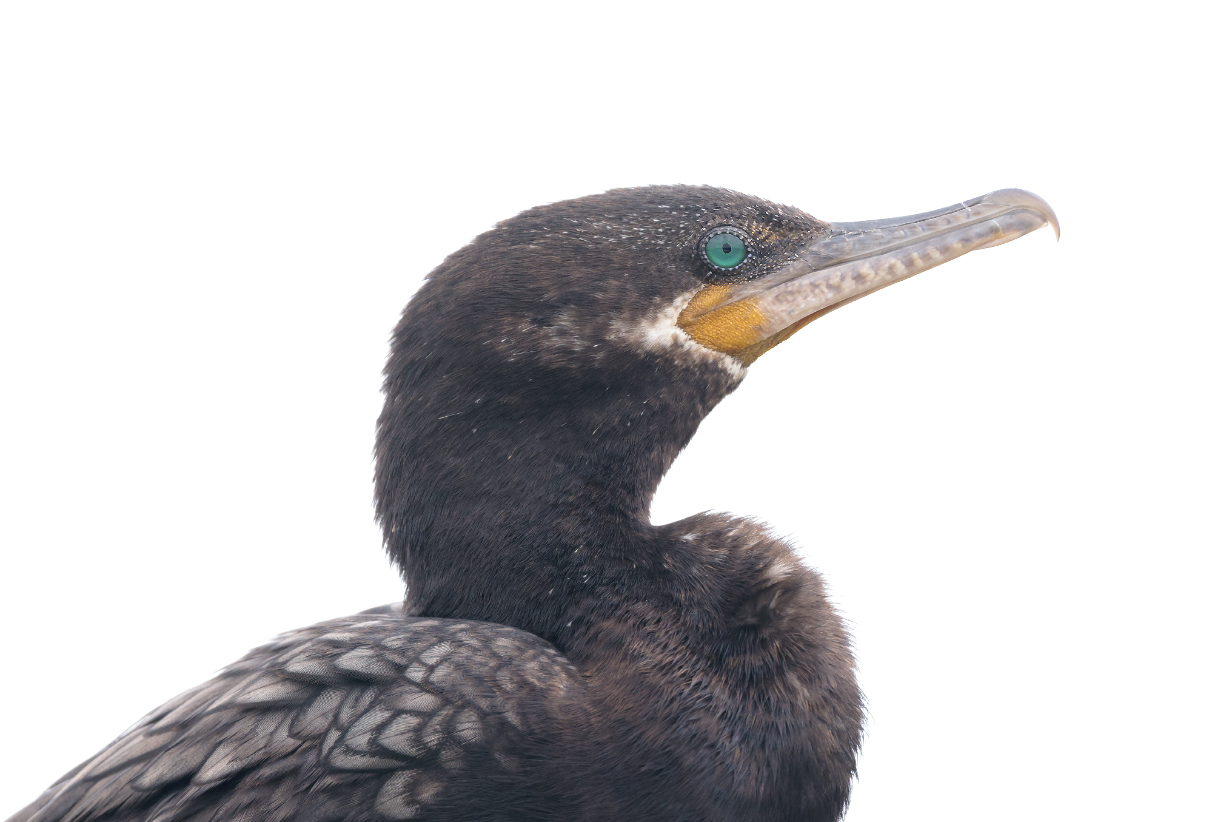
Neotropic cormorant ... developing breeding plumage but not there yet
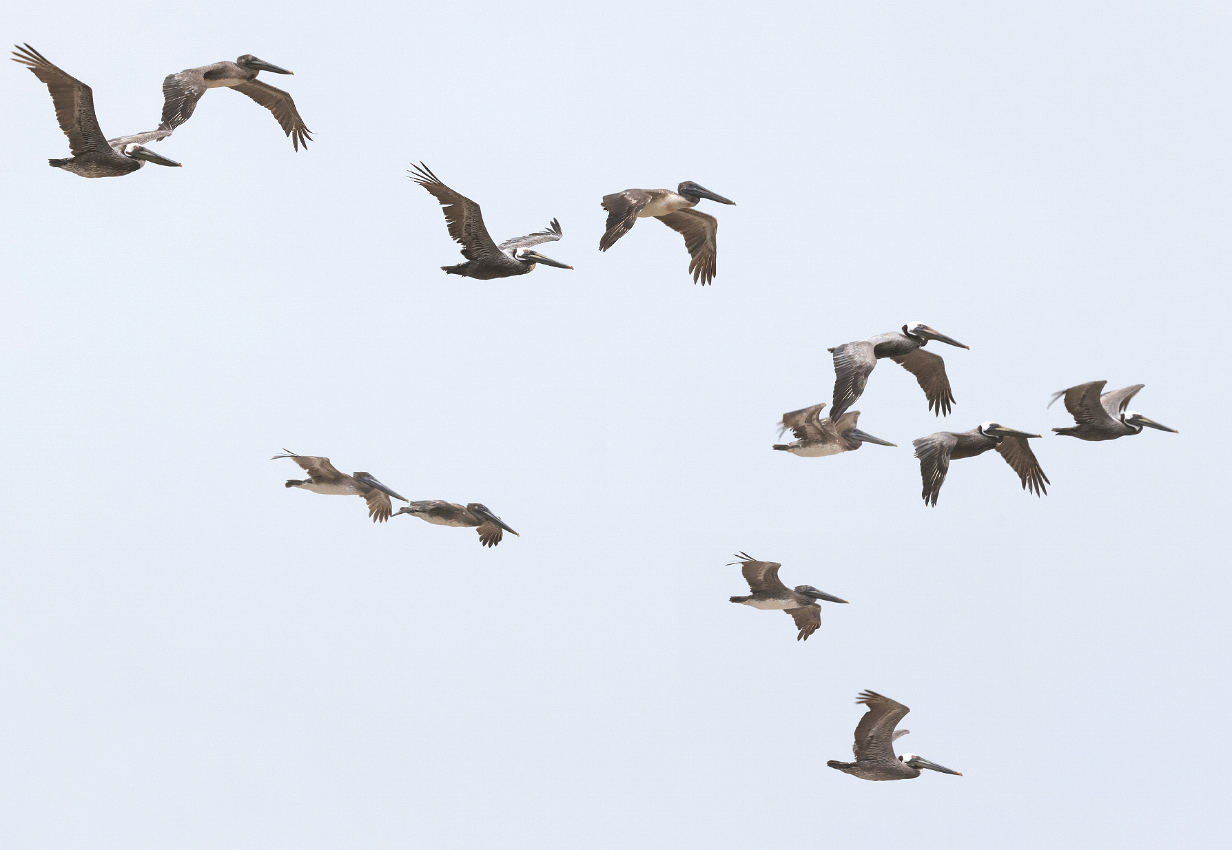
Brown pelicans flying just south of the High Island and the Bolivar Penninsula
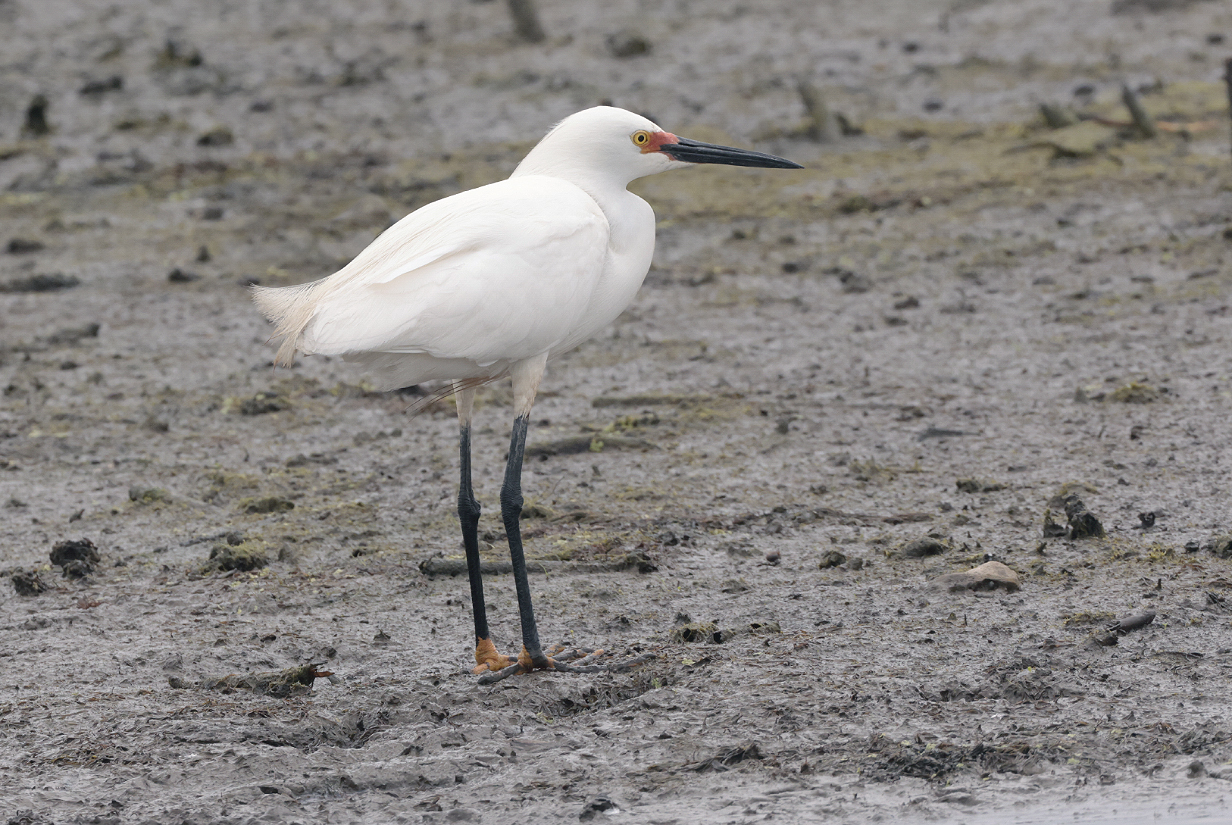
Snowy egret flushed in breeding plumage
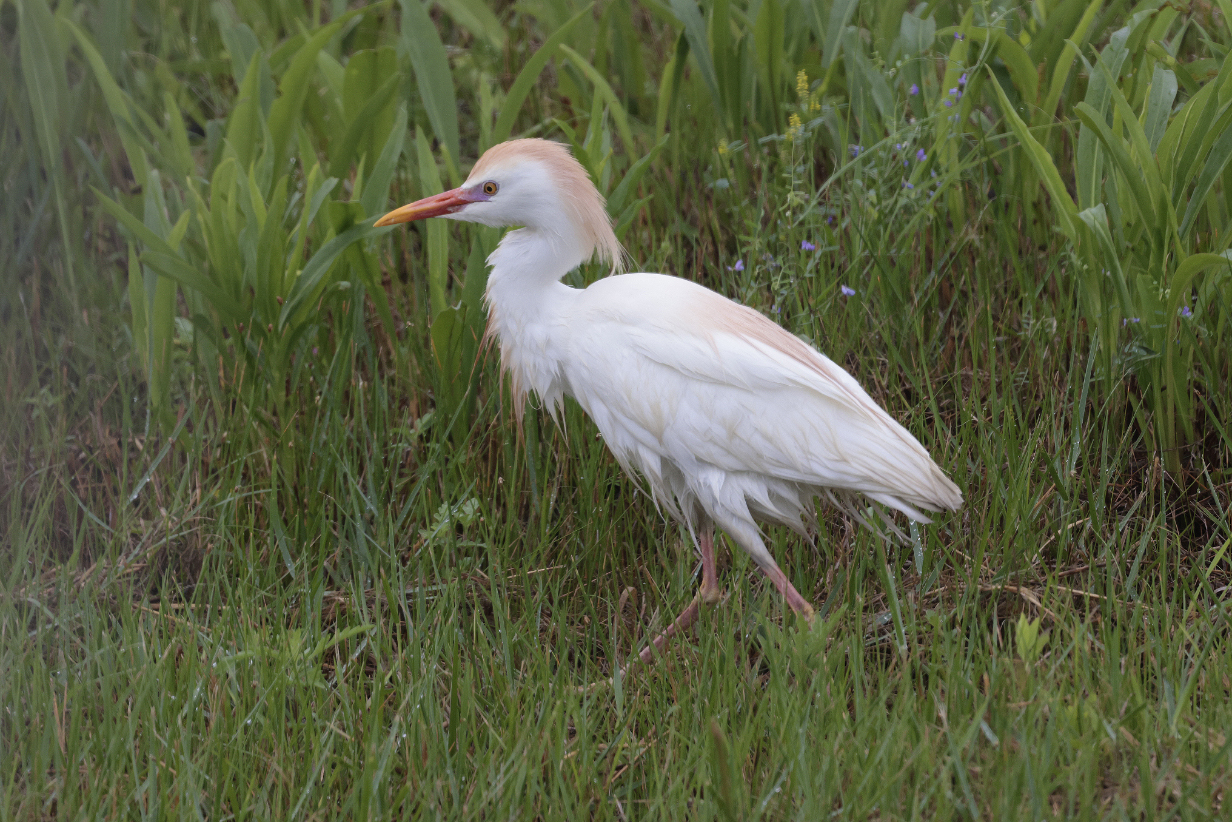
Western cattle egret in breeding plumage
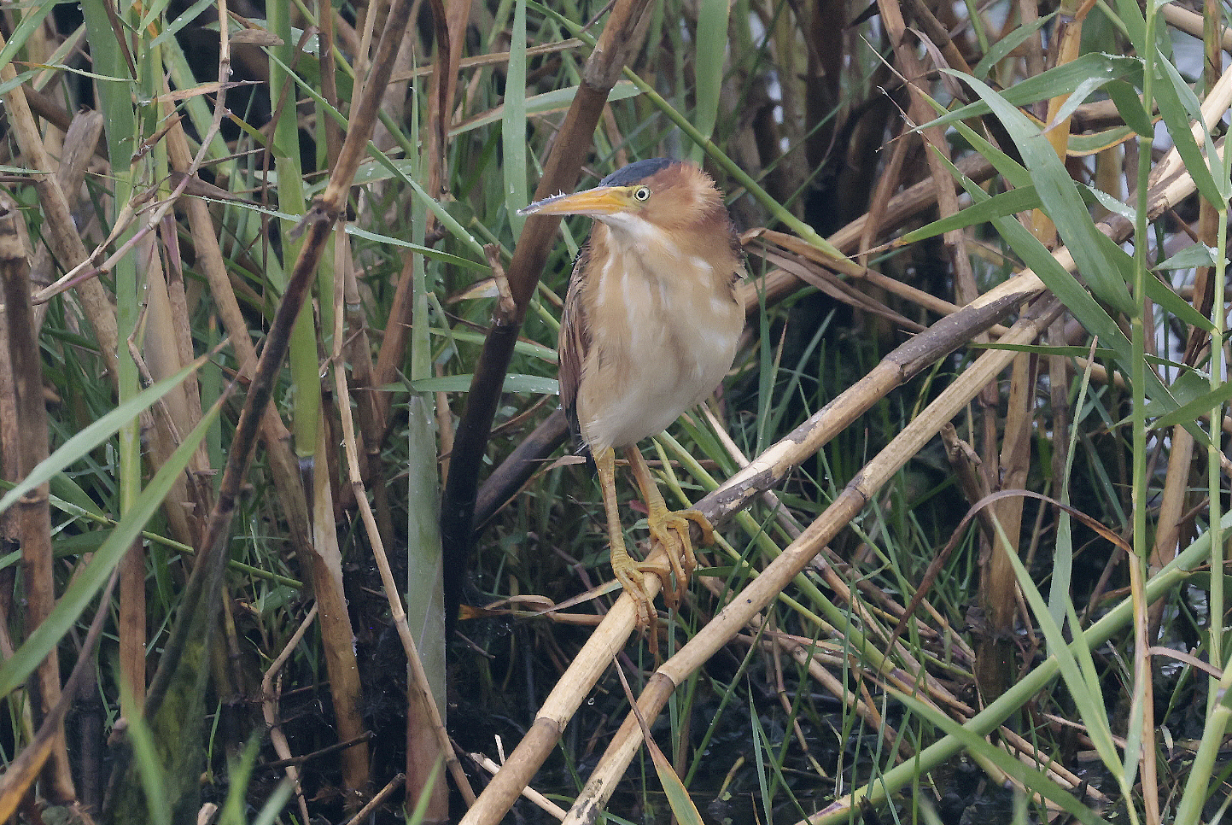
Least bittern at (formerly) Anahuac National Wildlife Refuge
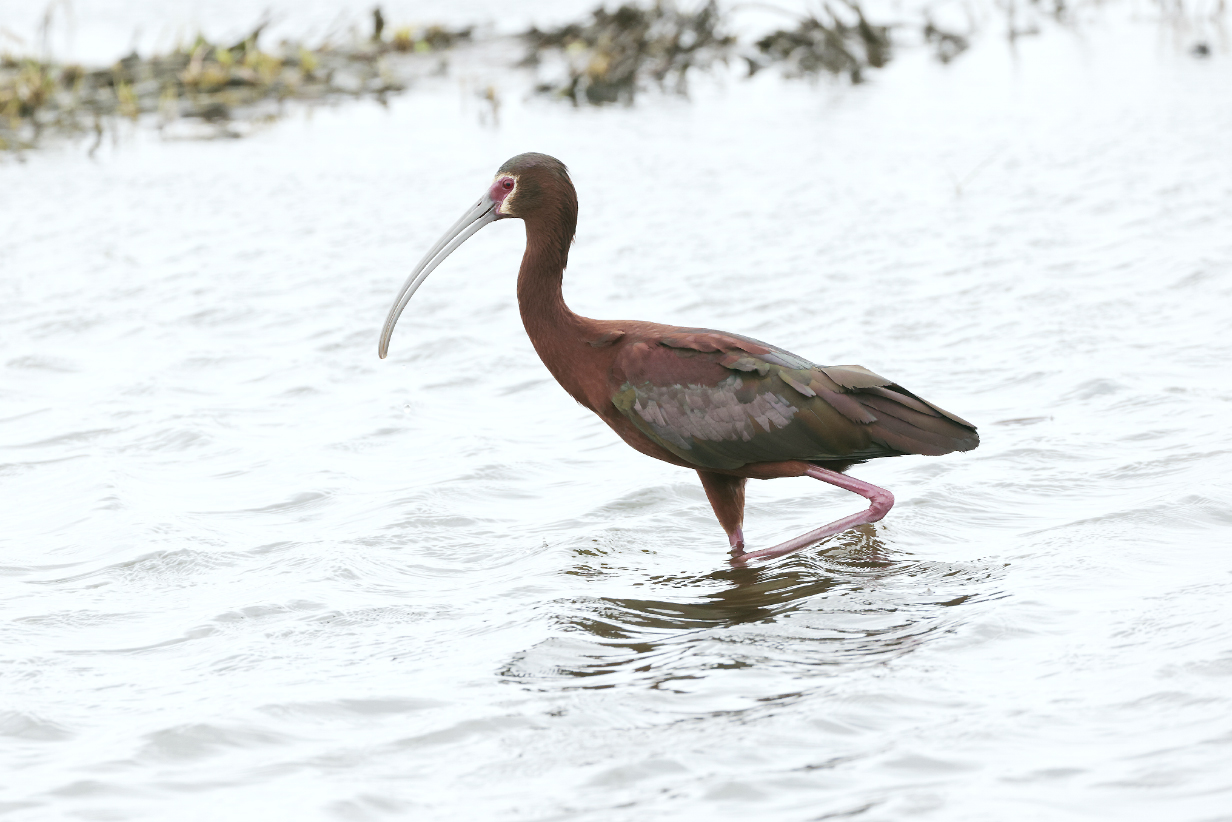
White-faced ibis at (formerly) Anahuac National Wildlife Refuge
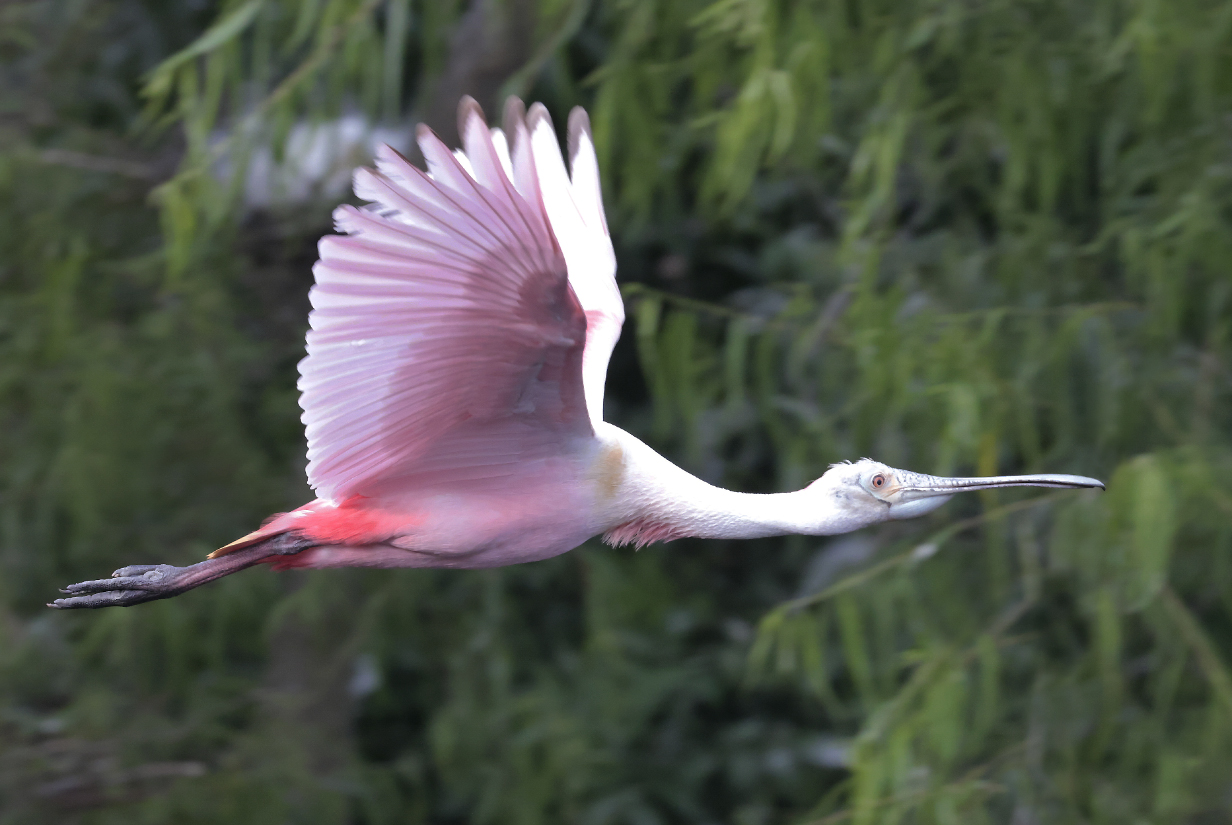
Roseate spoonbill at Smith Oaks rookery

Clapper rail in saltwater marsh at the west end of Bolivar Penninsula (bad upsun lighting but, surprisingly, out in the open in the early afternoon)
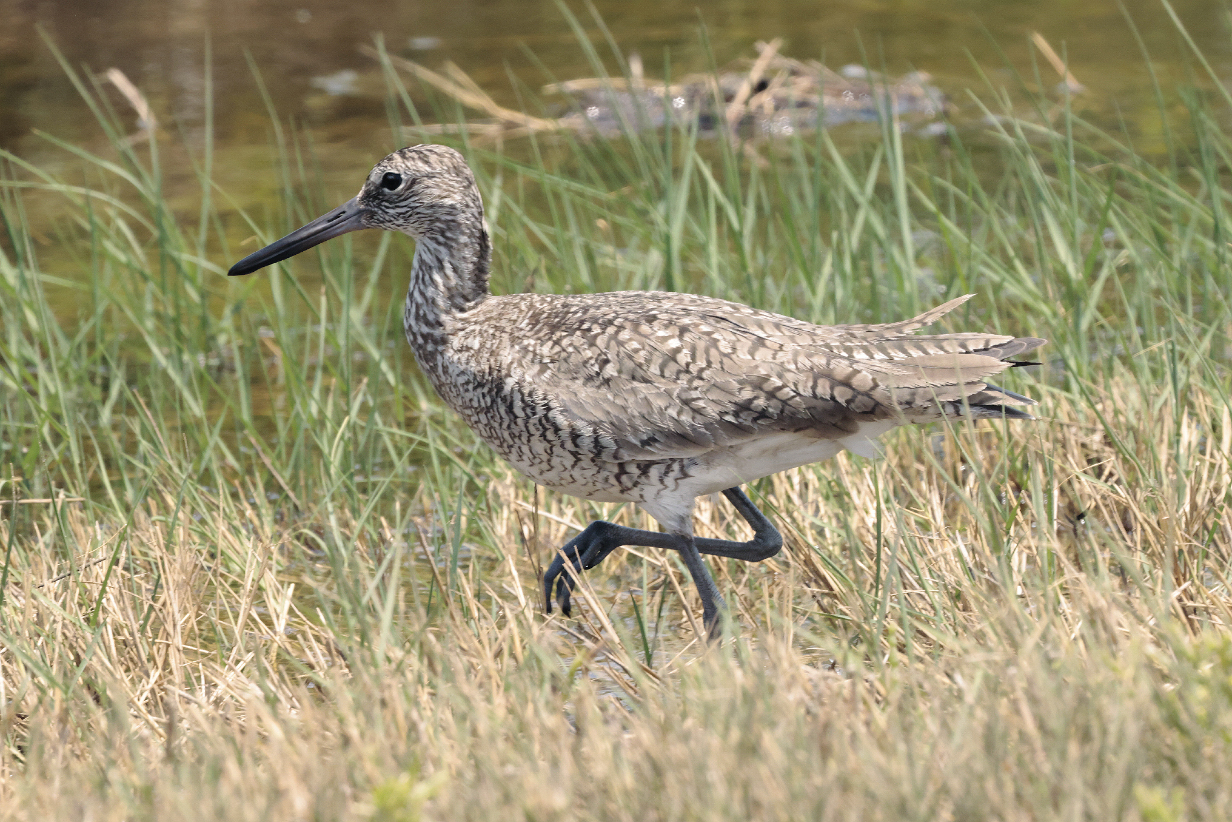
Willet in breeding plumage
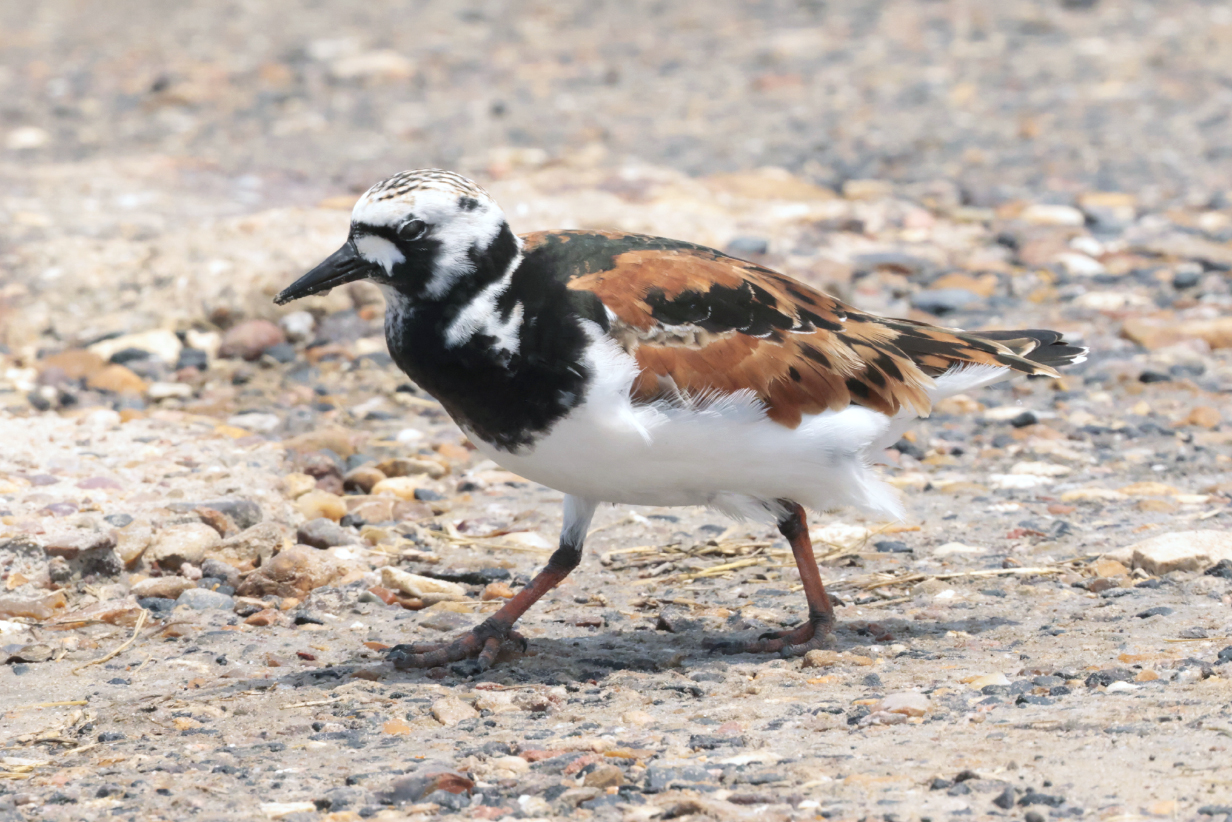
Ruddy turnstone in breeding plumage, Rollover Pass on the Bolivar Penninsula
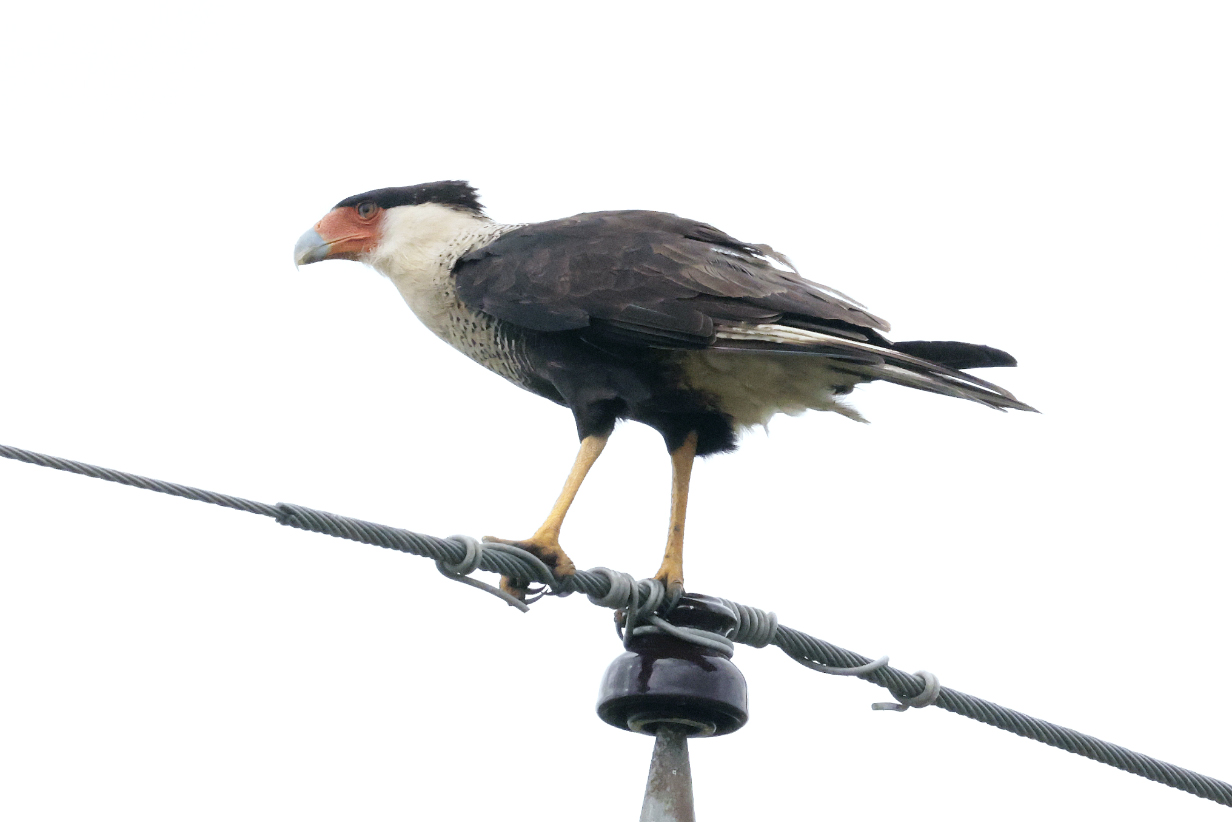
Crsted caracara

American barn owl in our "trip bird" picture. We went back to see this adult and its chicks a total of 3 times.

American barn owl chicks and (at left) adult. The "Einstein hair" fuzz was slowly disappearing during the week between our first and last visit. This is from April 27, our middle visit.
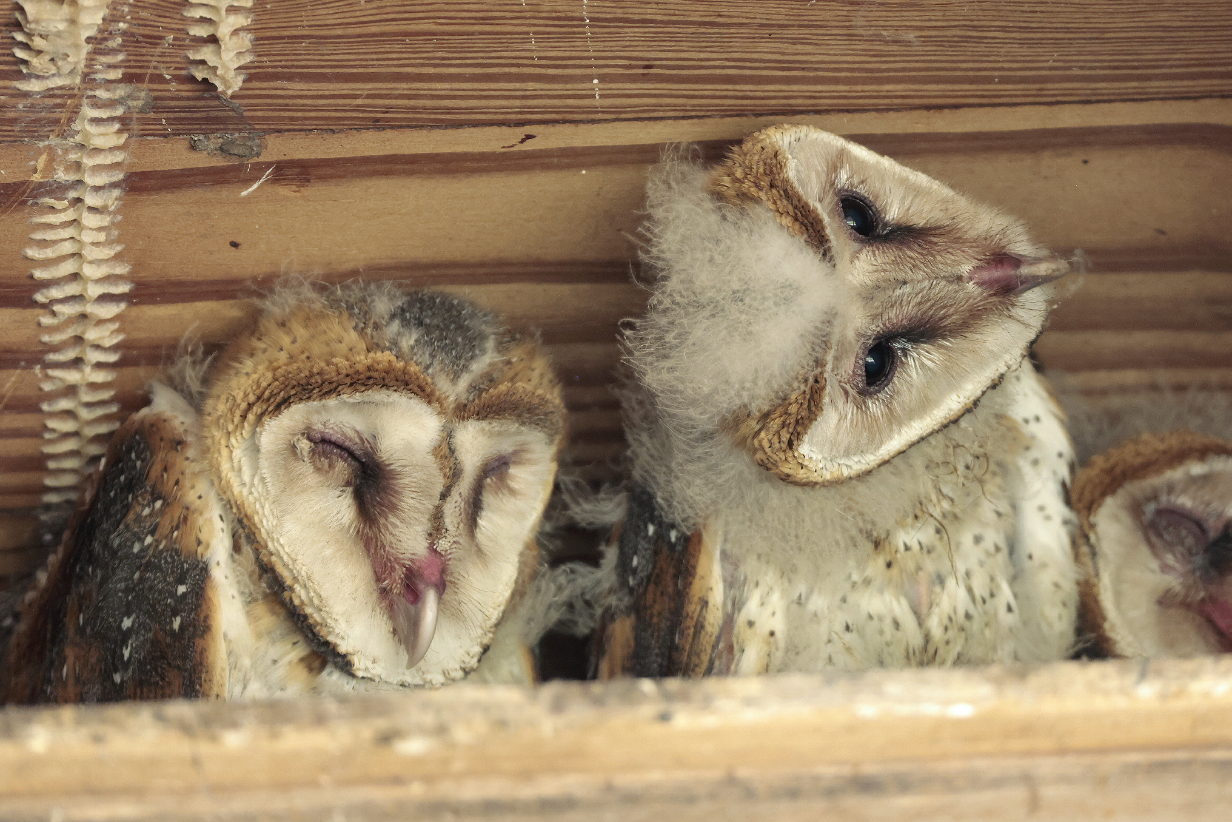
"What ... ?"
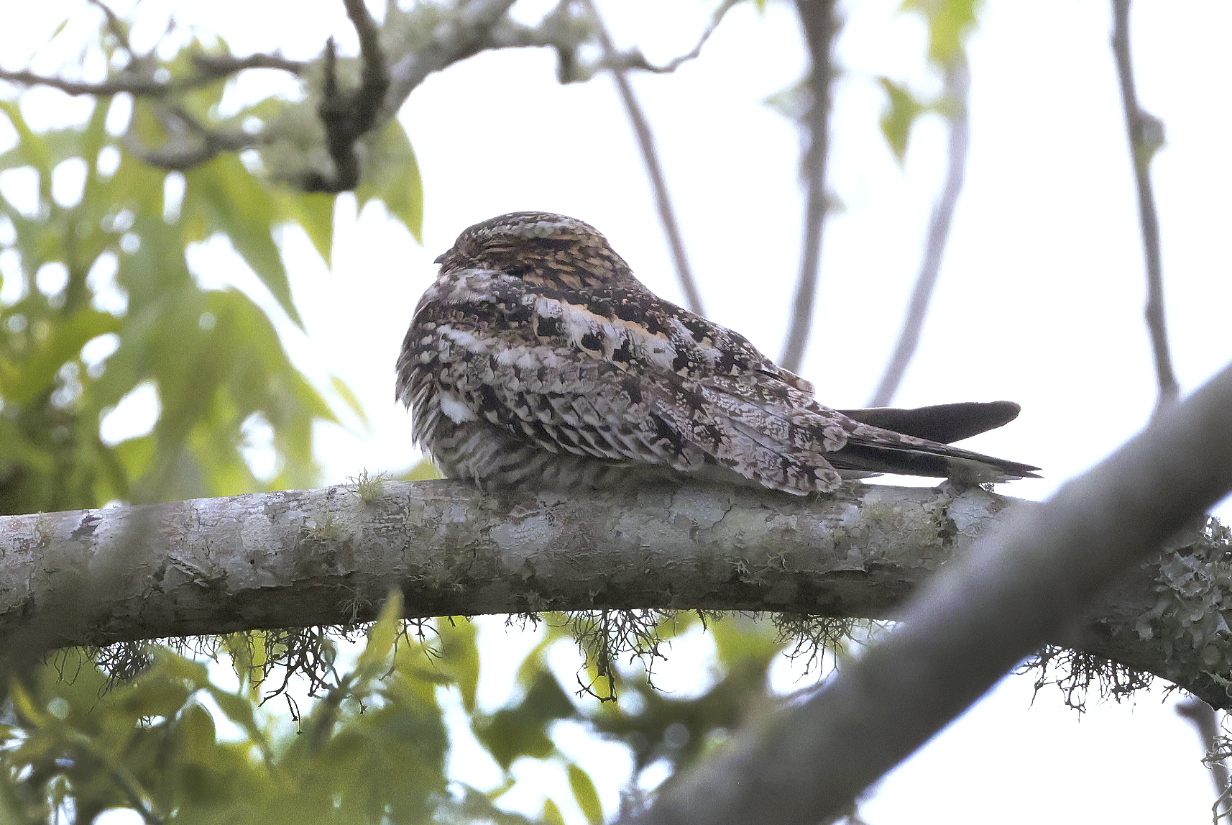
Common nighthawk
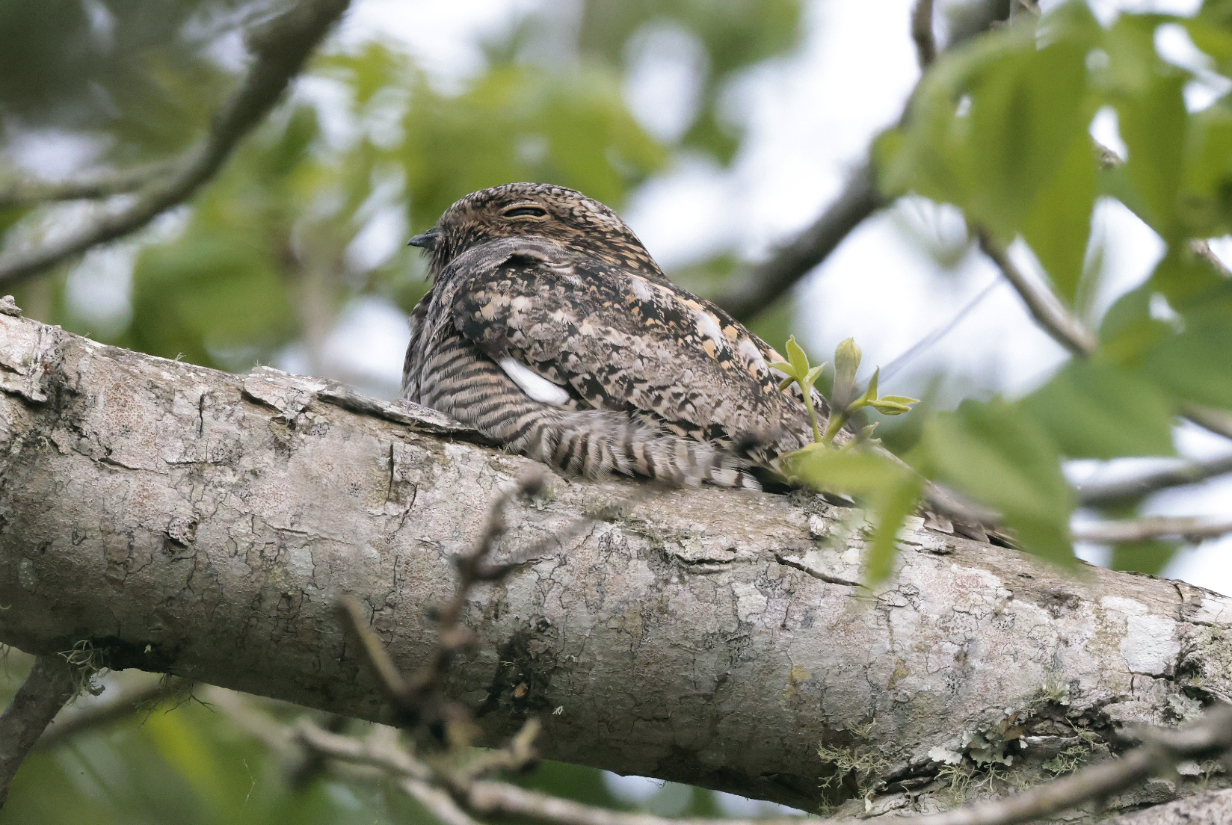
Lesser nighthawk (as identified by more experienced birders)
I suspect that this is also a Common nighthawk.
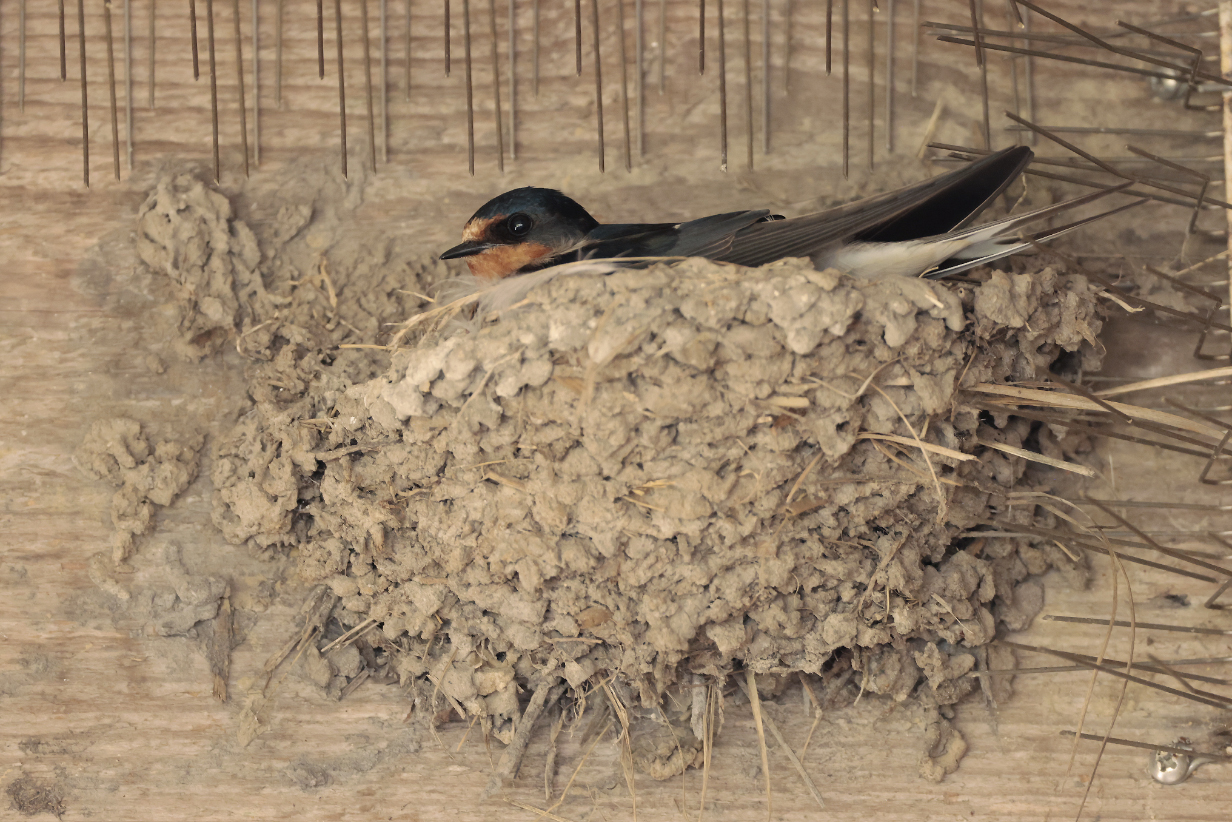
Barn swallows nested under the pavilion roof with the Barn owls.
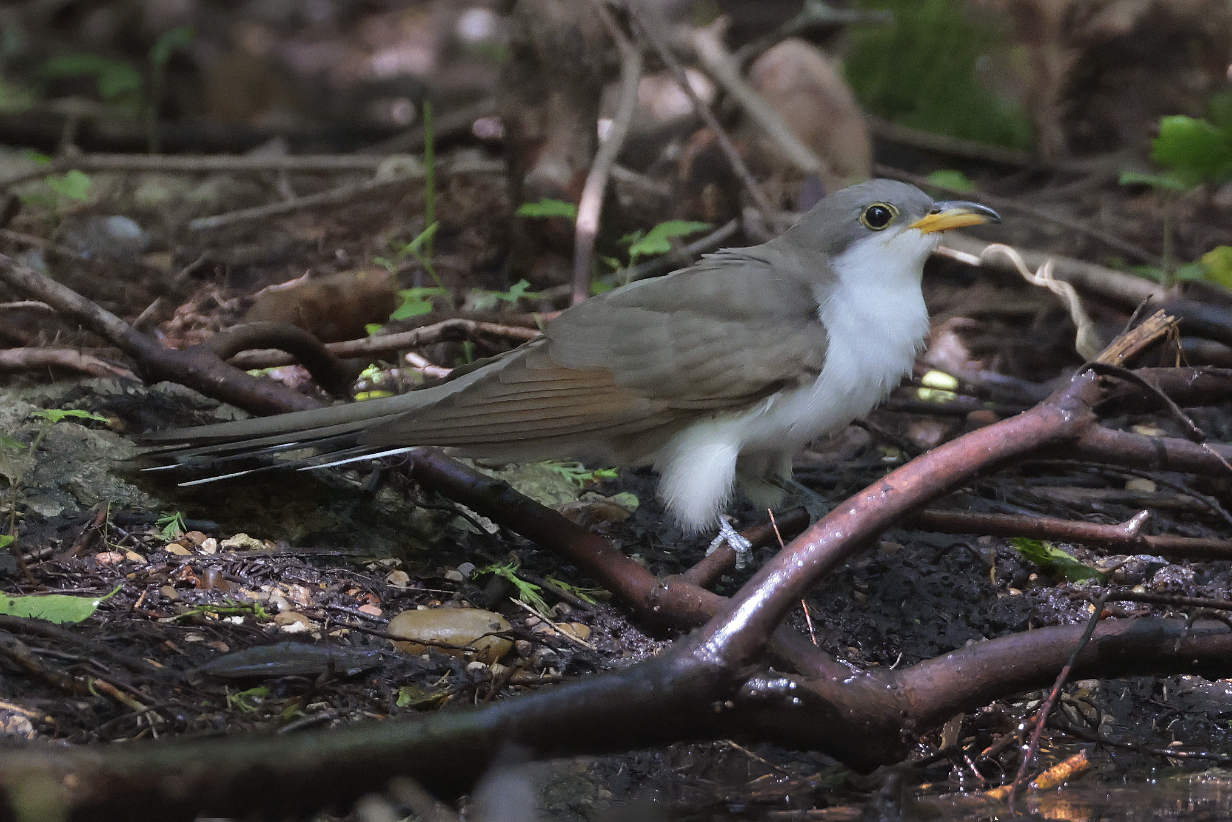
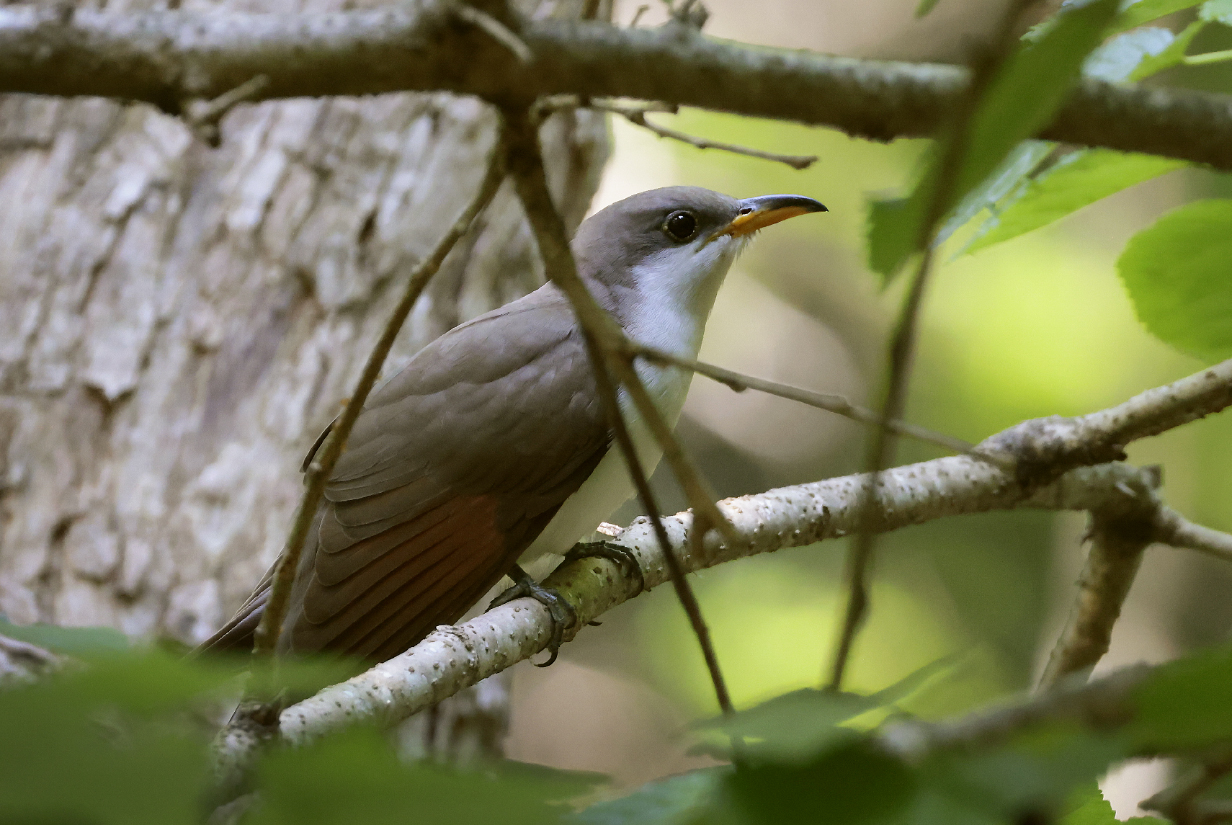
Yellow-billed cuckoo
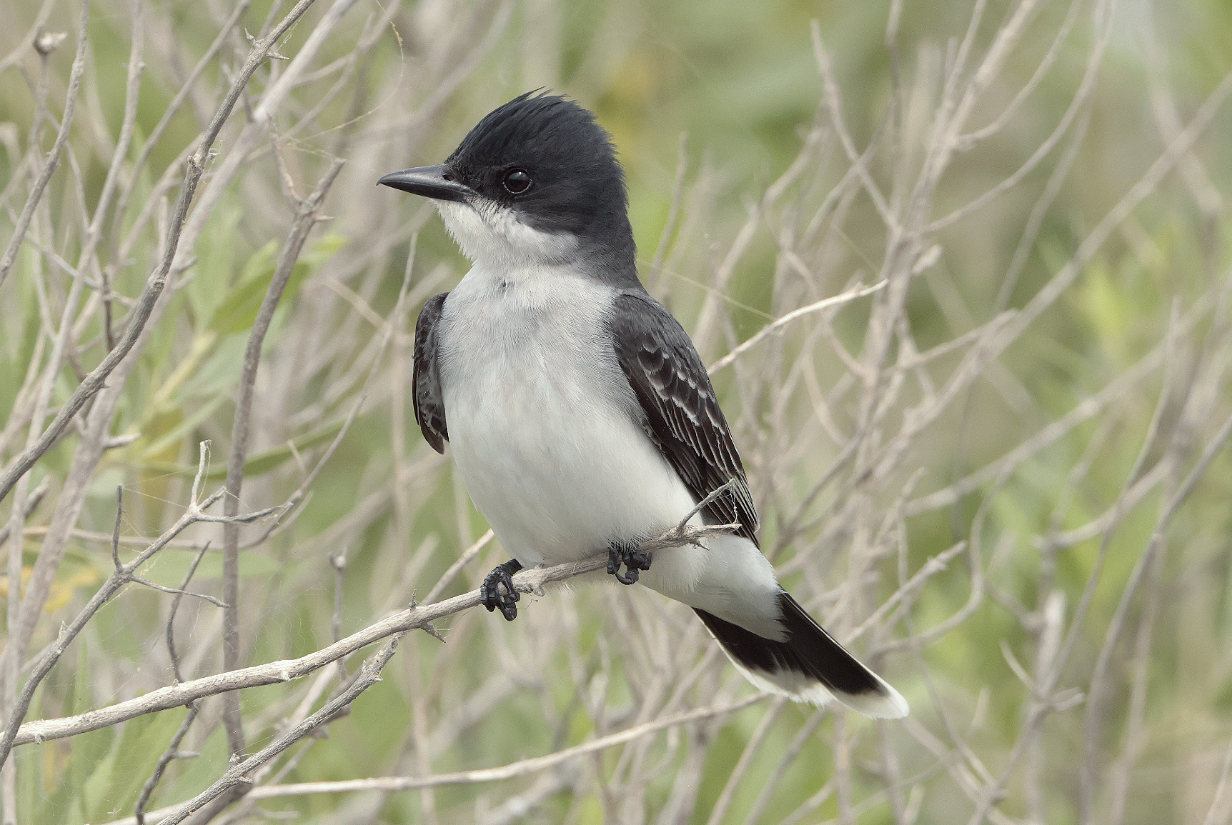
Eastern kingbird started to arrive in the last days of April, coincident with the normal explosion in insect population. Which was unexpectedly muted, this year.
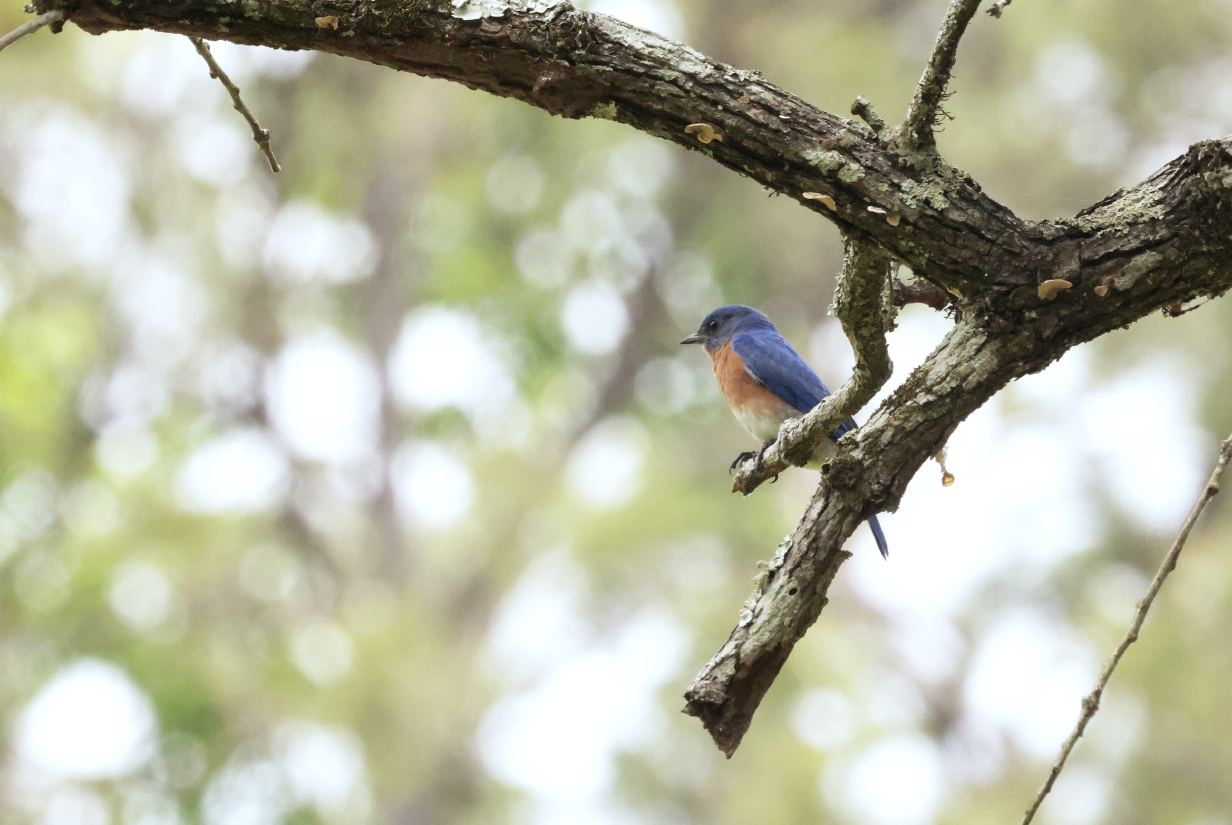
Eastern bluebird in the Angelina National Forest, where we tried (unsuccessfully) to see Bachman's sparrow
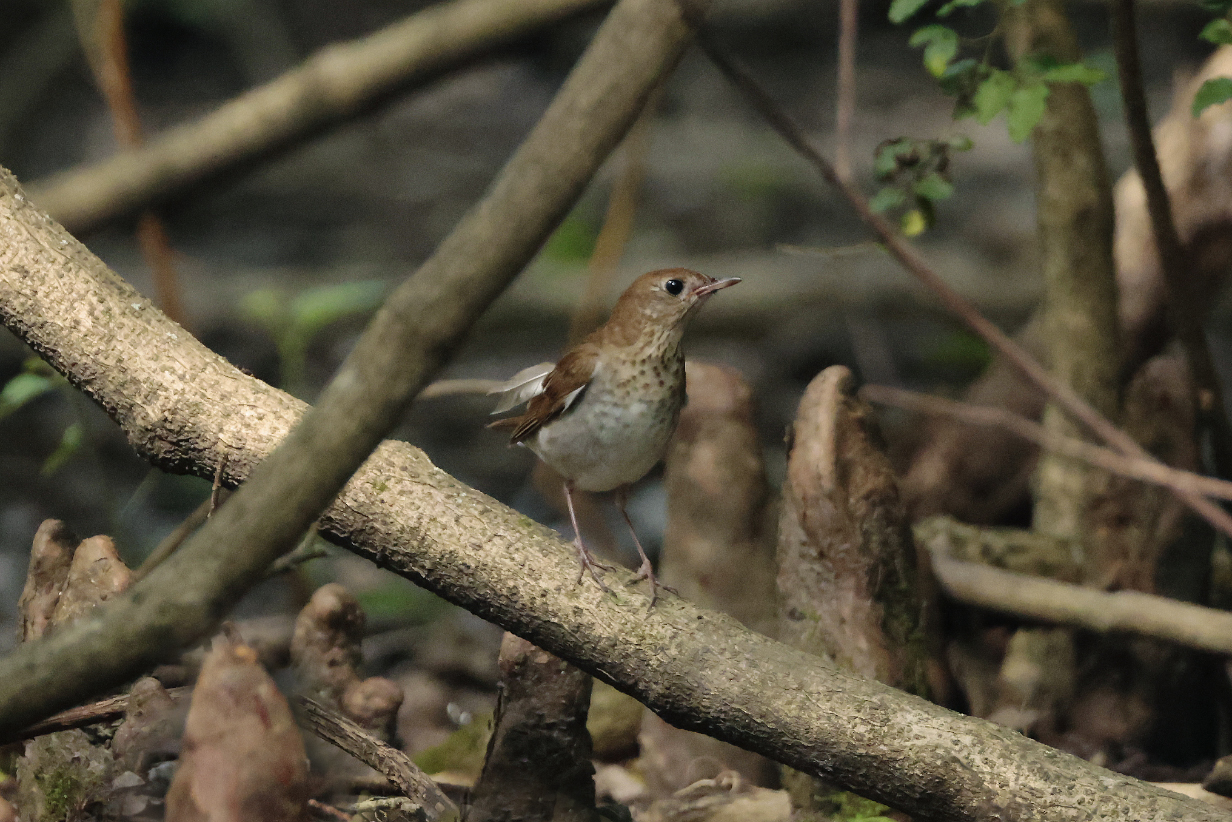
Veery (one of 4 species of thrushes that we saw: Veery, Swainson's, Gray-cheeked, and Wood thrush)
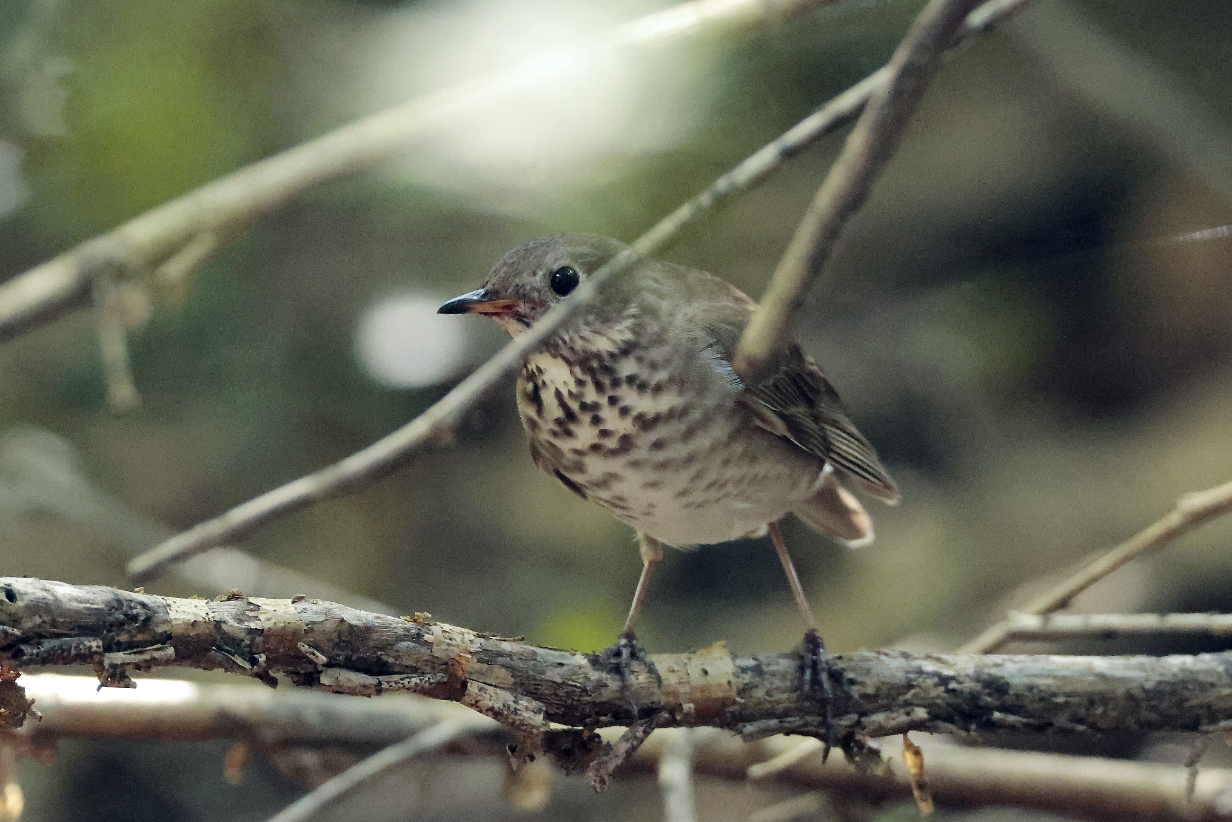
Gray-cheeked thrush (not co-operative, but -- at least -- close) (Note: No buffy "spectacles")
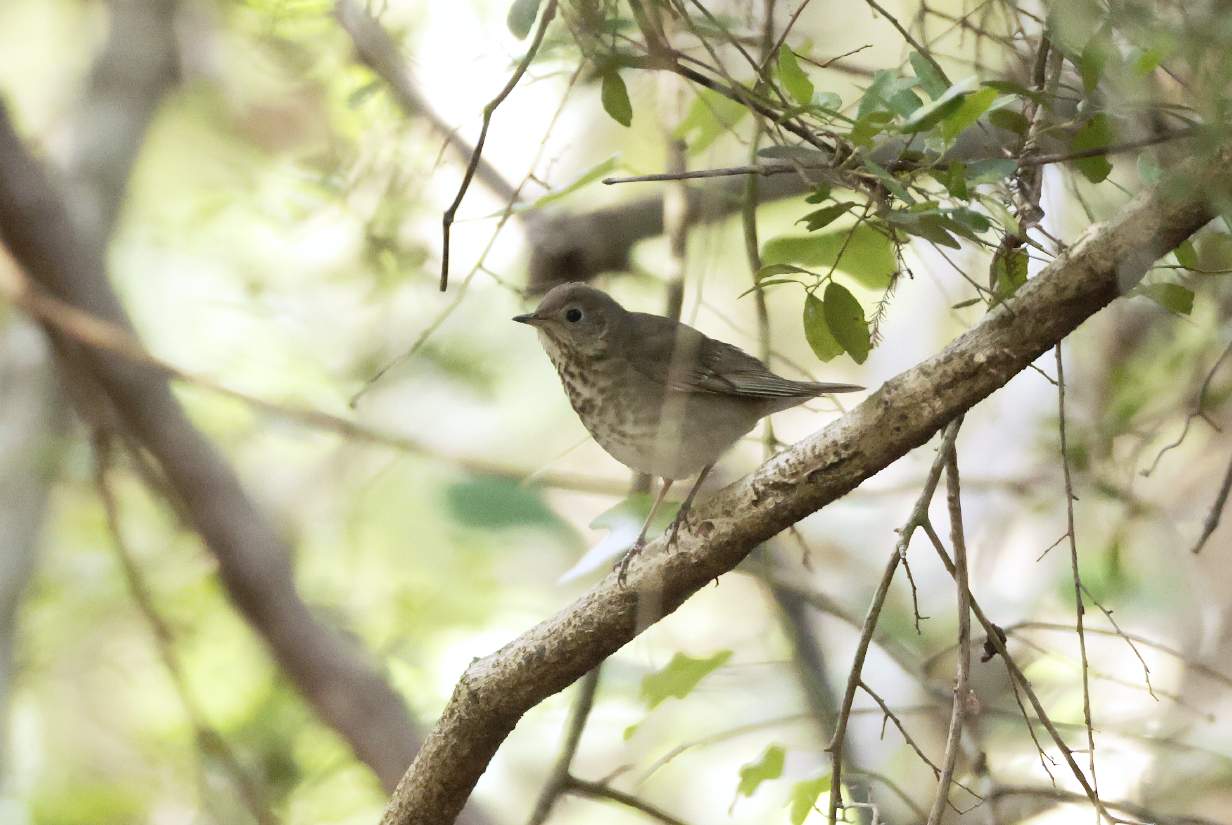
I think that this is a Swainson's thrush.
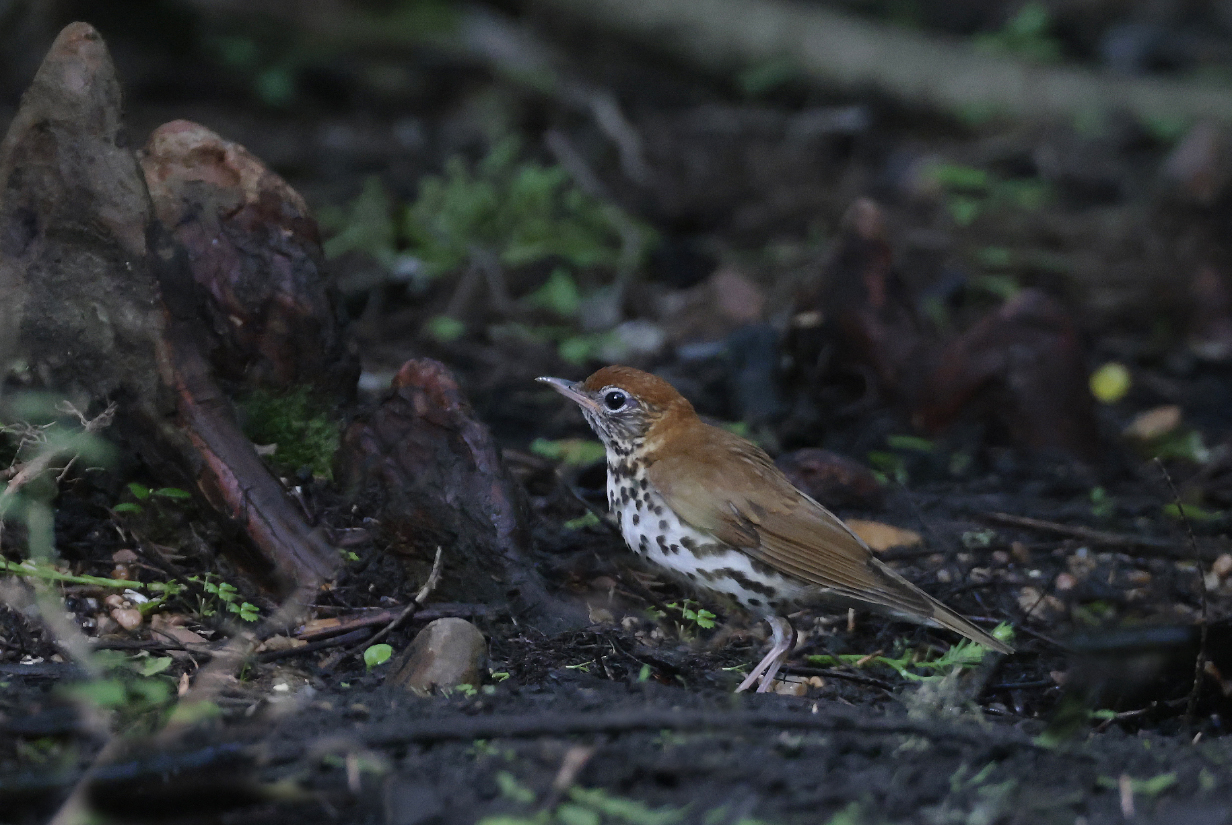
Wood thrush
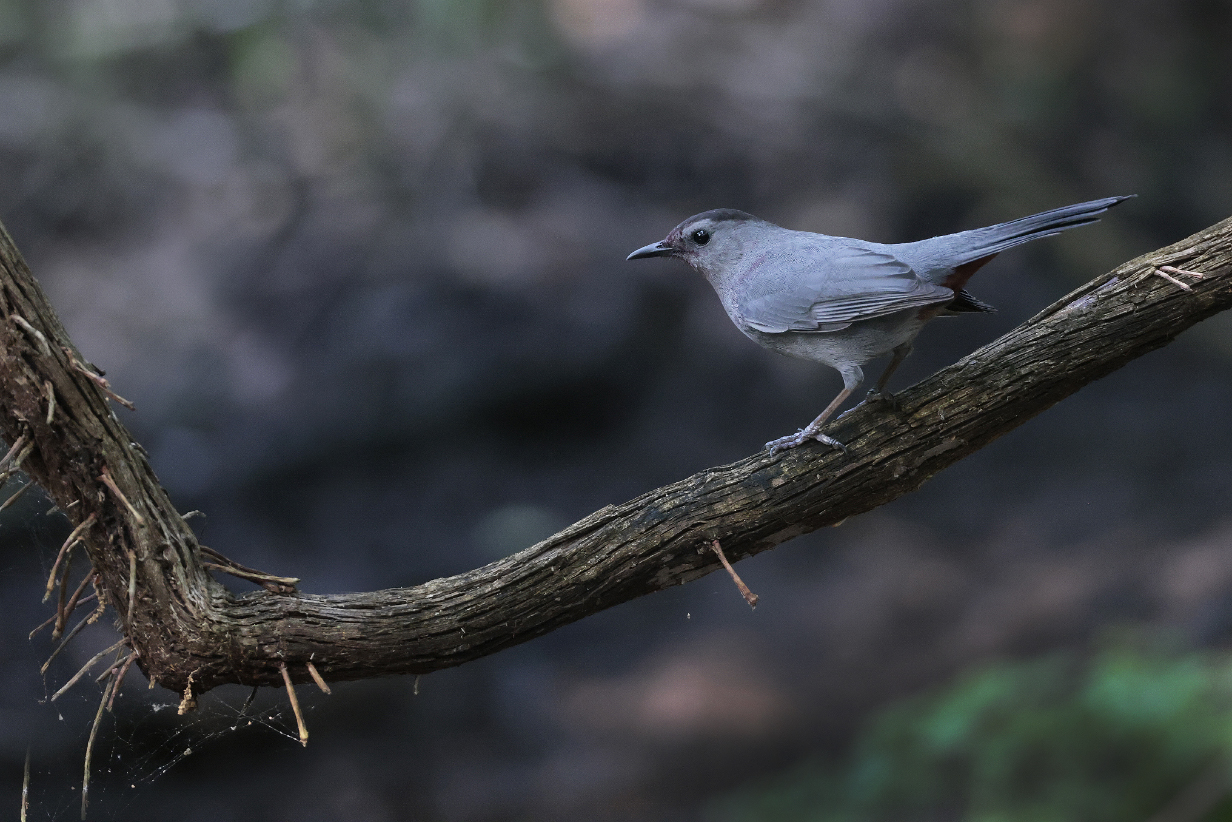
Gray catbird was -- no contest -- the bird most commonly seen at the drip in Boy Scout Woods.
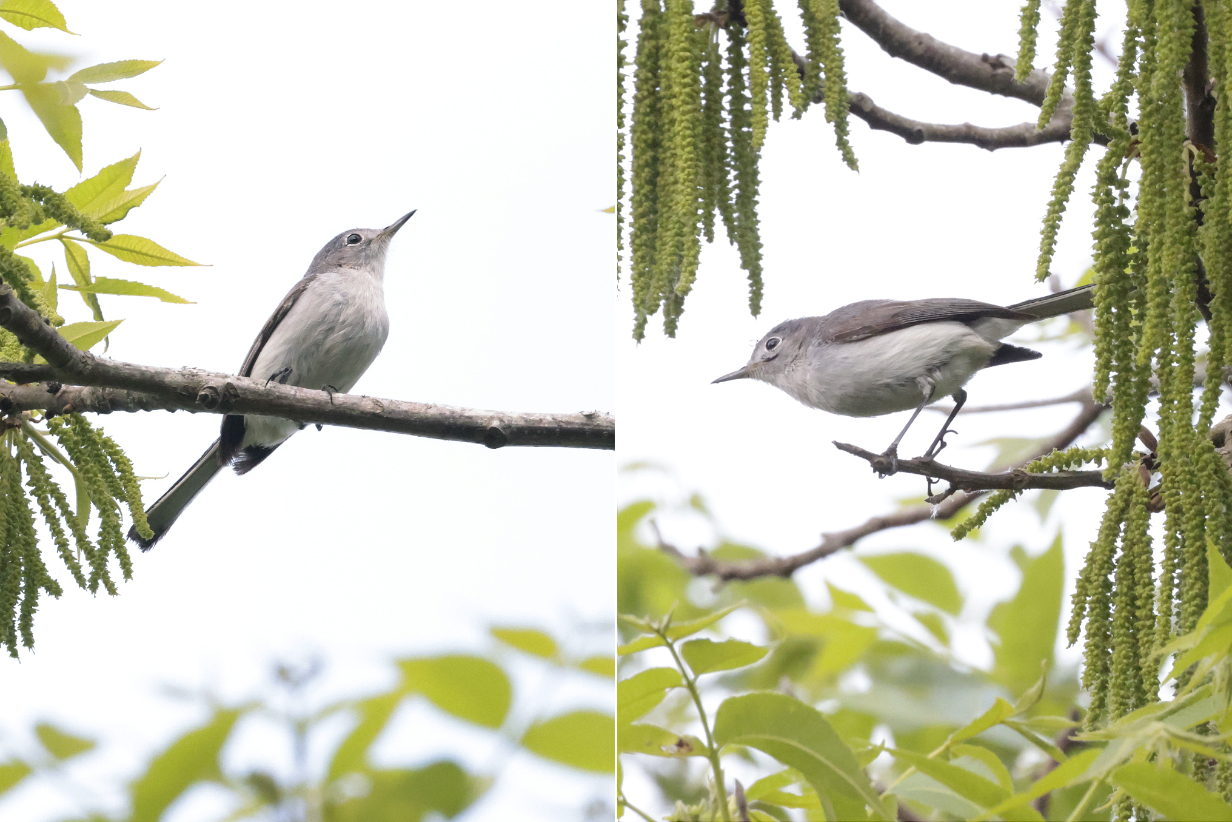
Blue-gray gnatcatcher (female) (Thanks to Jack Poll for the ID!)
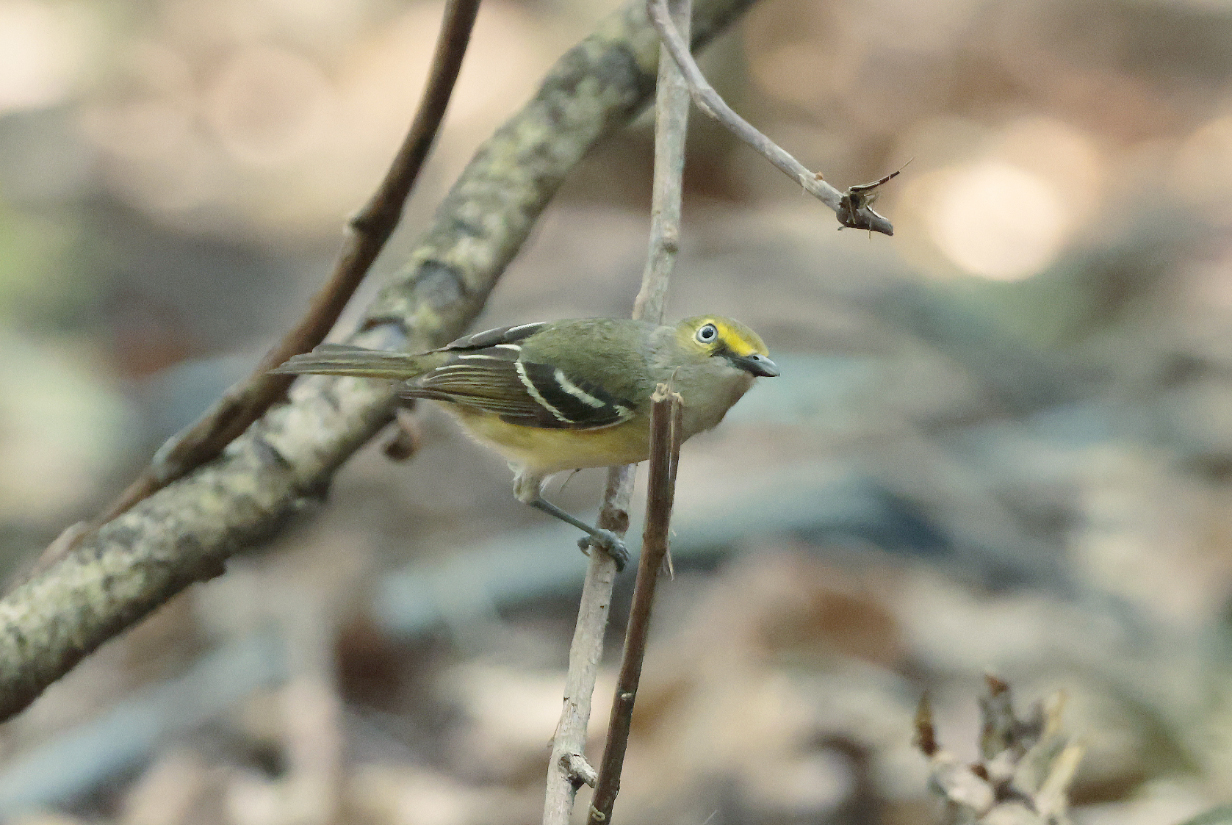
White-eyed vireo
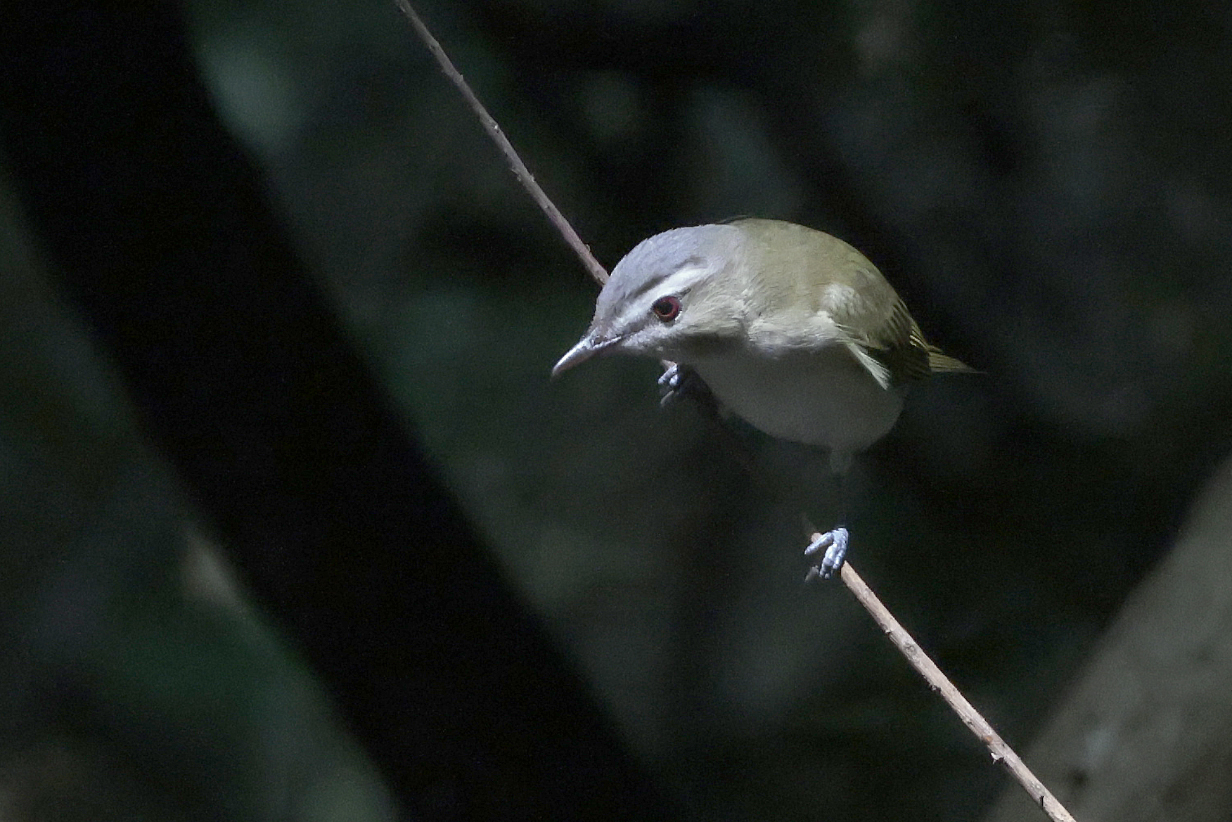
Red-eyed vireo
Warblers
We saw 19 species of warblers during this trip, and 18 of them are shown here.

Golden-winged warbler at the drip in Boy Scout Woods, May 2nd
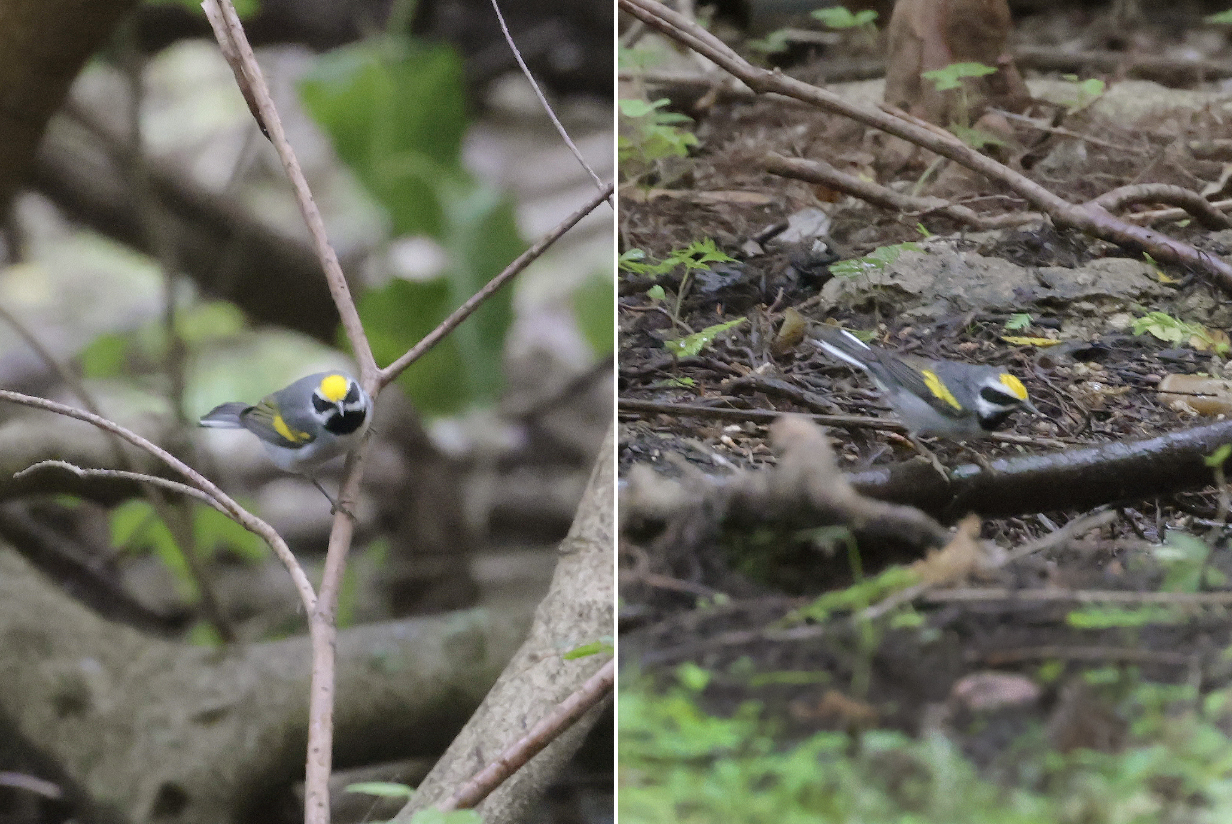
Golden-winged warbler on August 25, 2025: The day when we arrived at High Island turned out to be the busiest of the trip. I took only a quick evening look with only my 500 mm lens and immediately got these not-very-good pictures of the best warbler of the trip. Sometimes 4-6 bird species at once were coming in cautiously to bathe, were splashing around in the water, or were preening on the way out. It was a magical moment, not repeated during this year's visit.
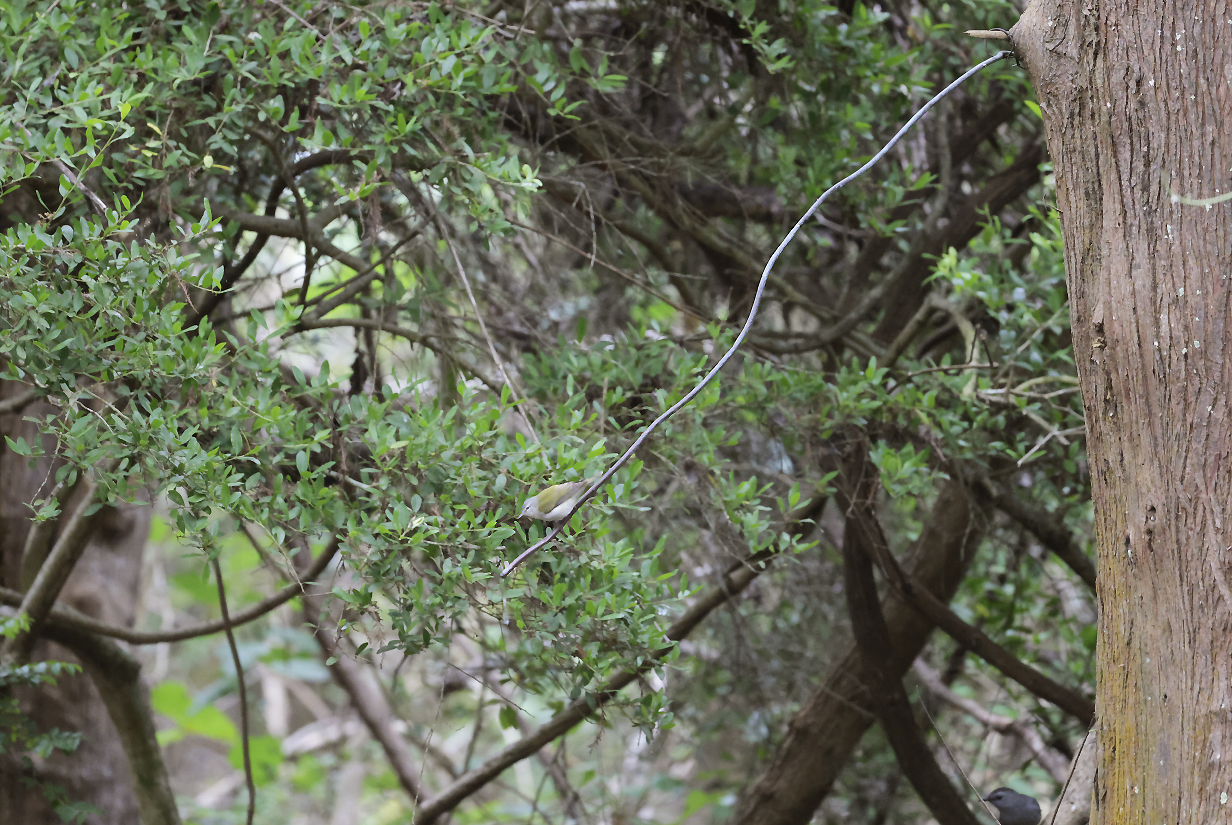
Tennessee warbler on the drip pipe, first evening of the trip
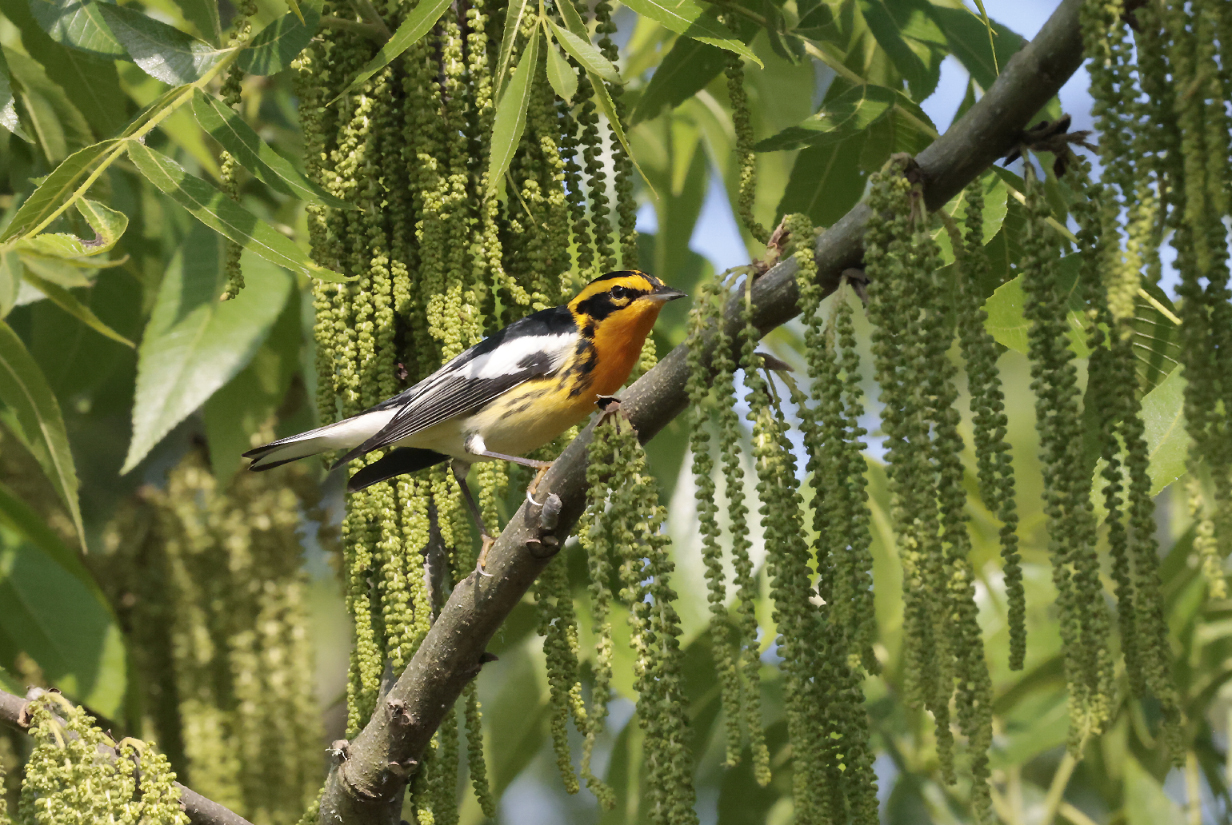
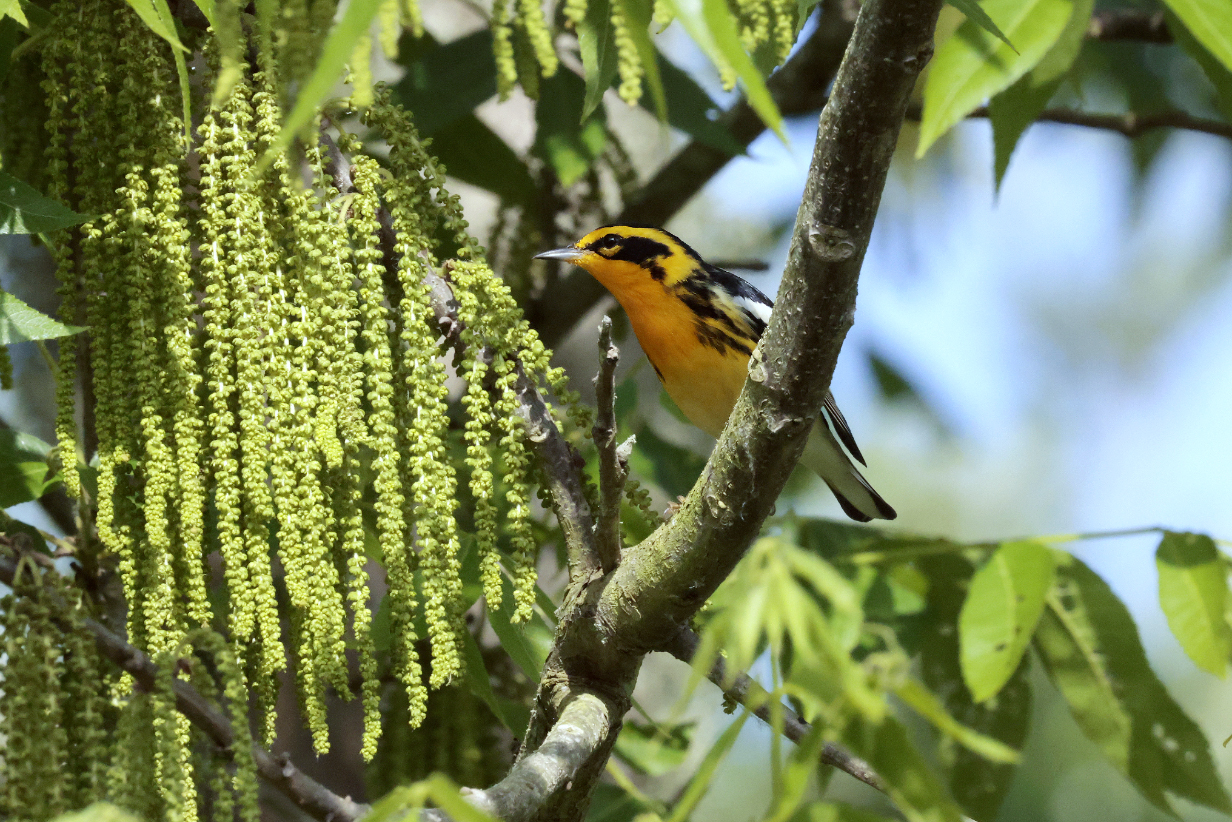
Blackburnian warbler (male in breeding plumage)
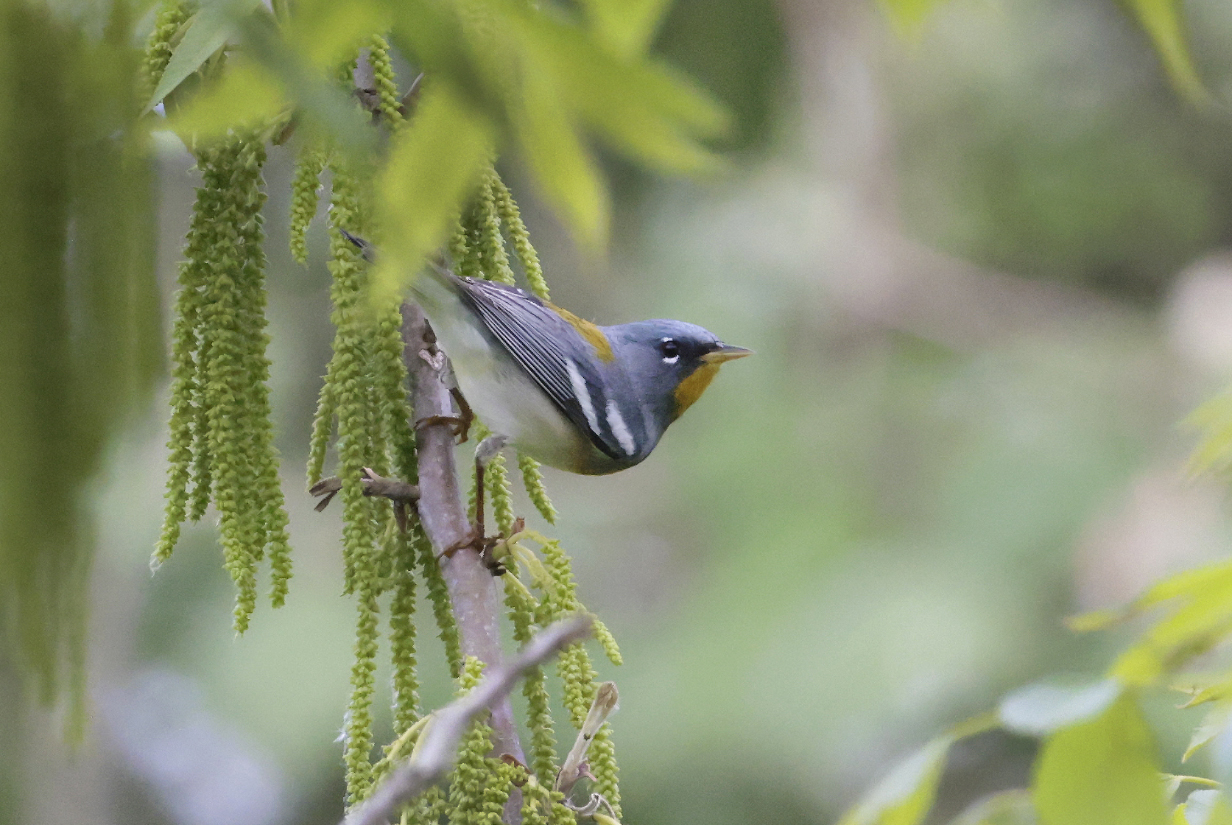
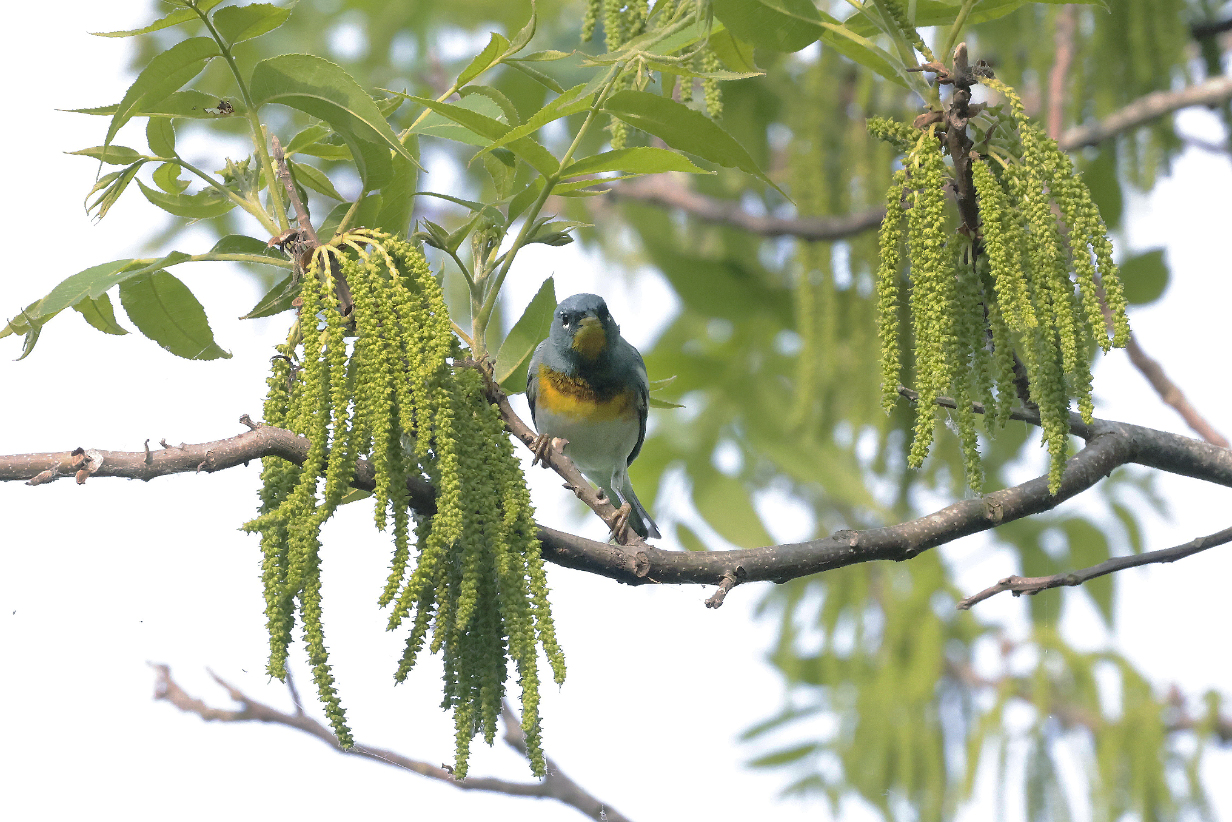
Northern parula (a warbler that I have never before photographed)
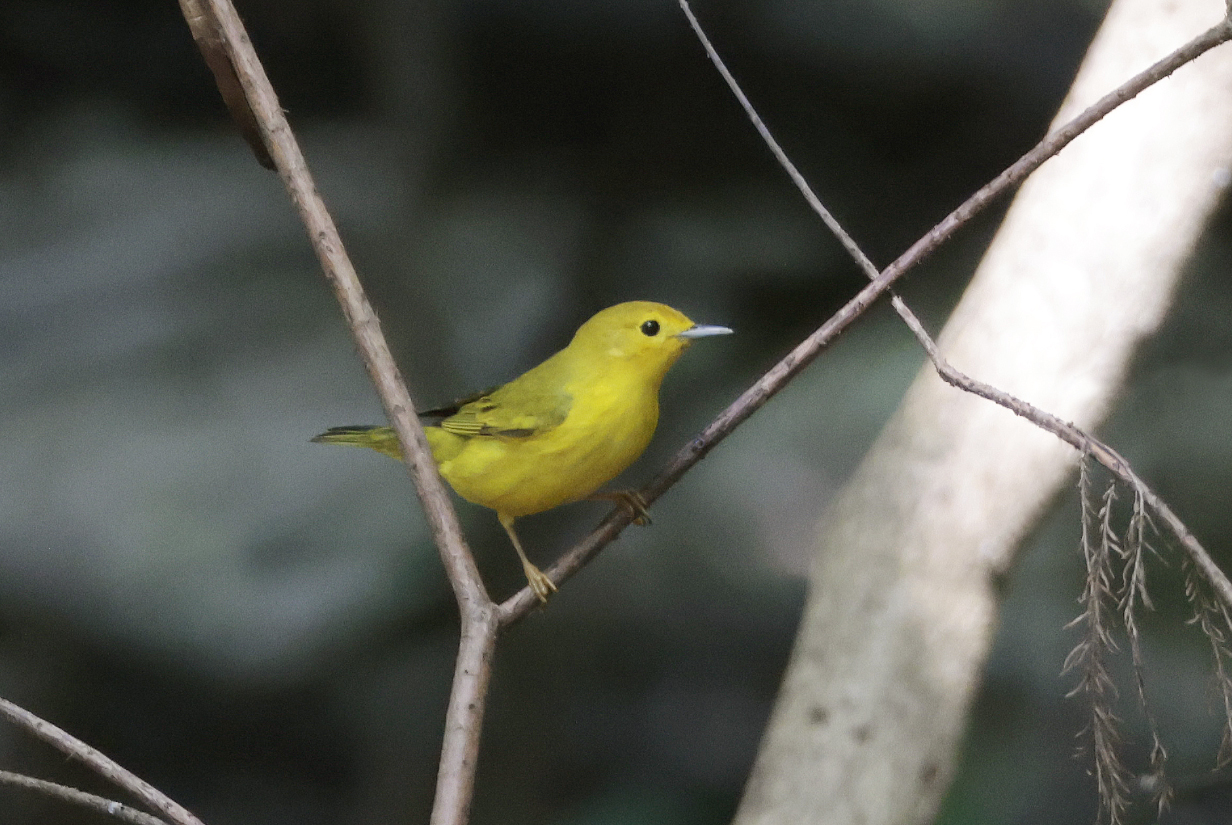
Yellow warbler (I saw a breeding-plumage male during the trip, but this isn't it. This is a female ... and not a very good picture of a tiny bird that's far away.)

Magnolia warbler coming in to the drip at Boy Scout Woods
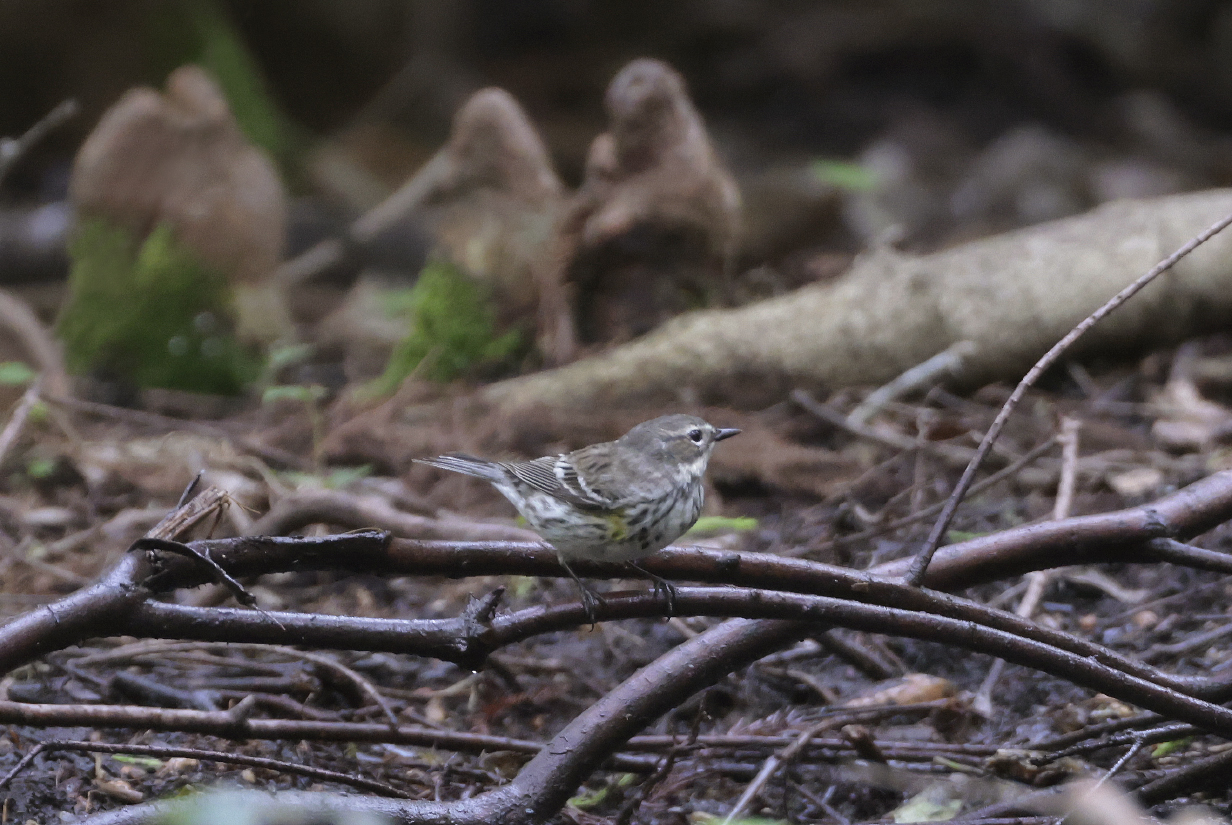
Yellow-rumped warbler (Eastern "Myrtle" version with white throat and not strongly marked: this is probably a female. While flitting around, she showed her strongly yellow rump clearly.)
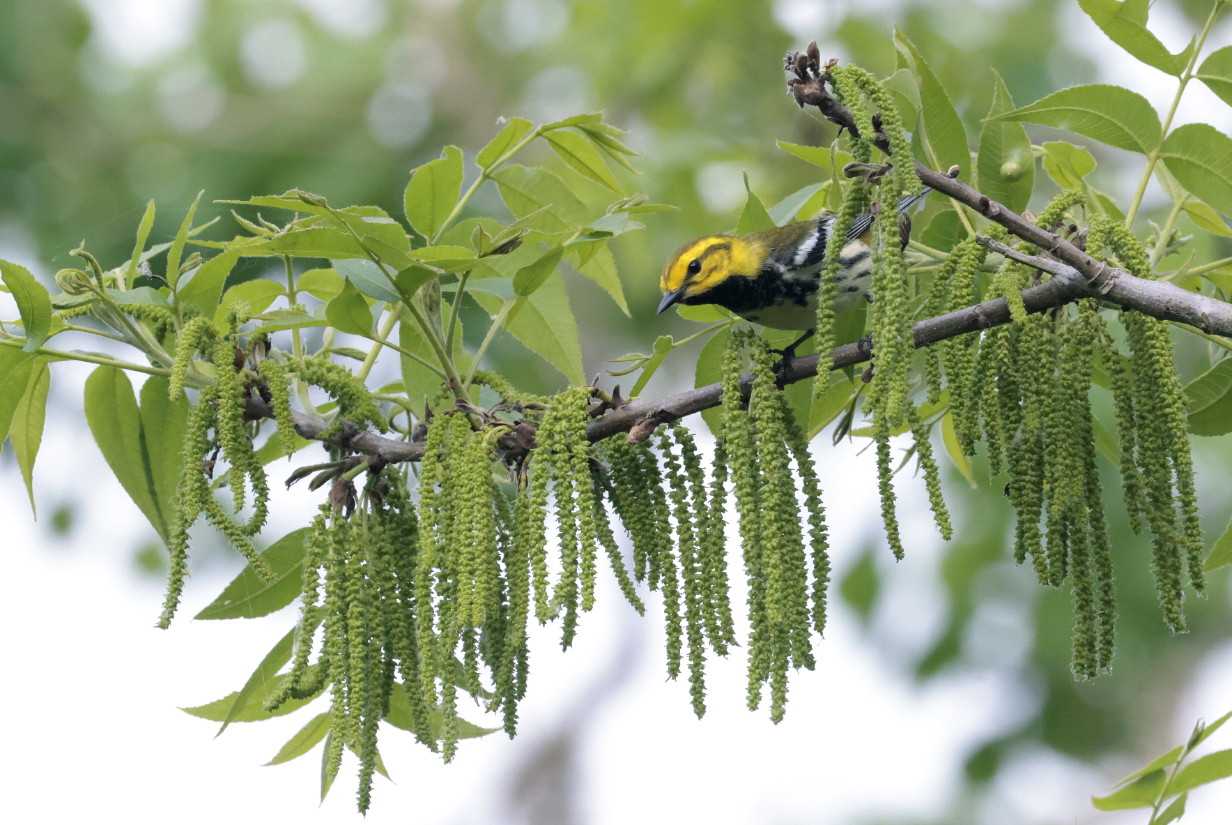
Black-throated green warbler
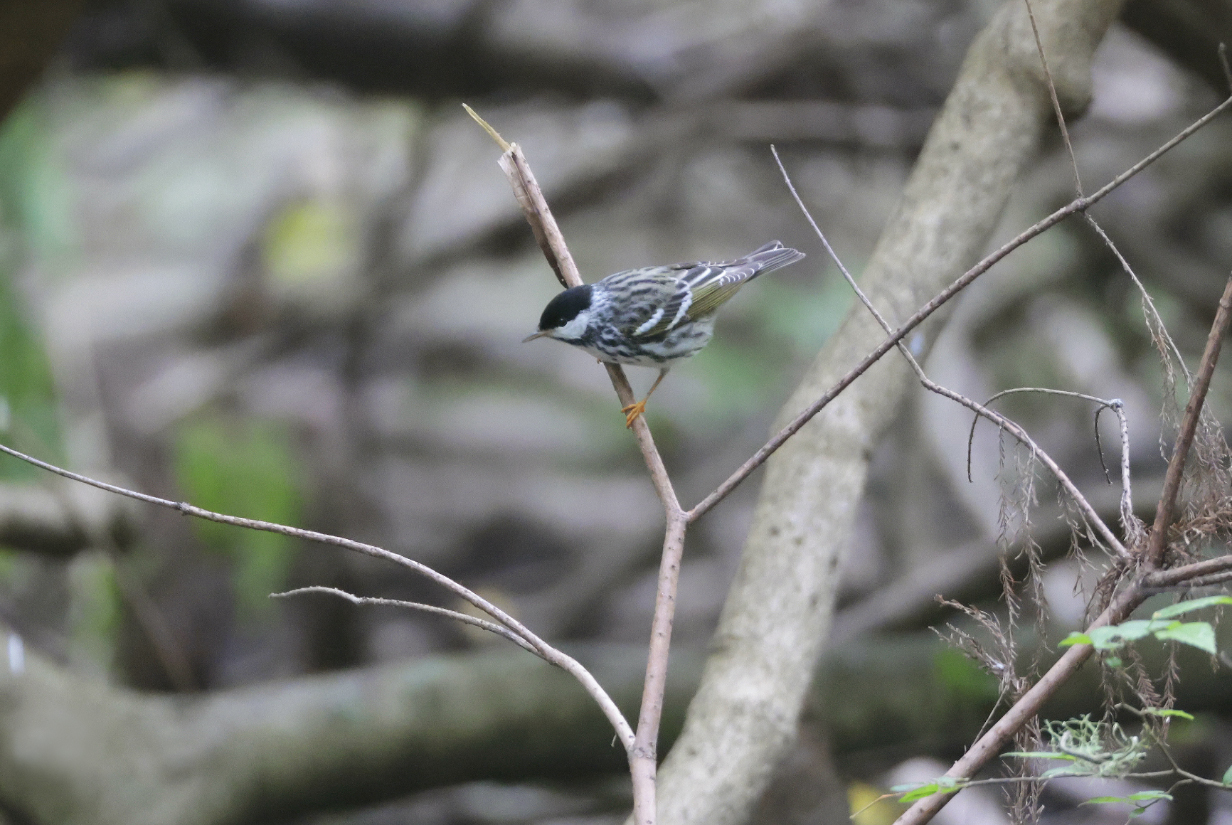
Blackpoll warbler during the first evening of the trip
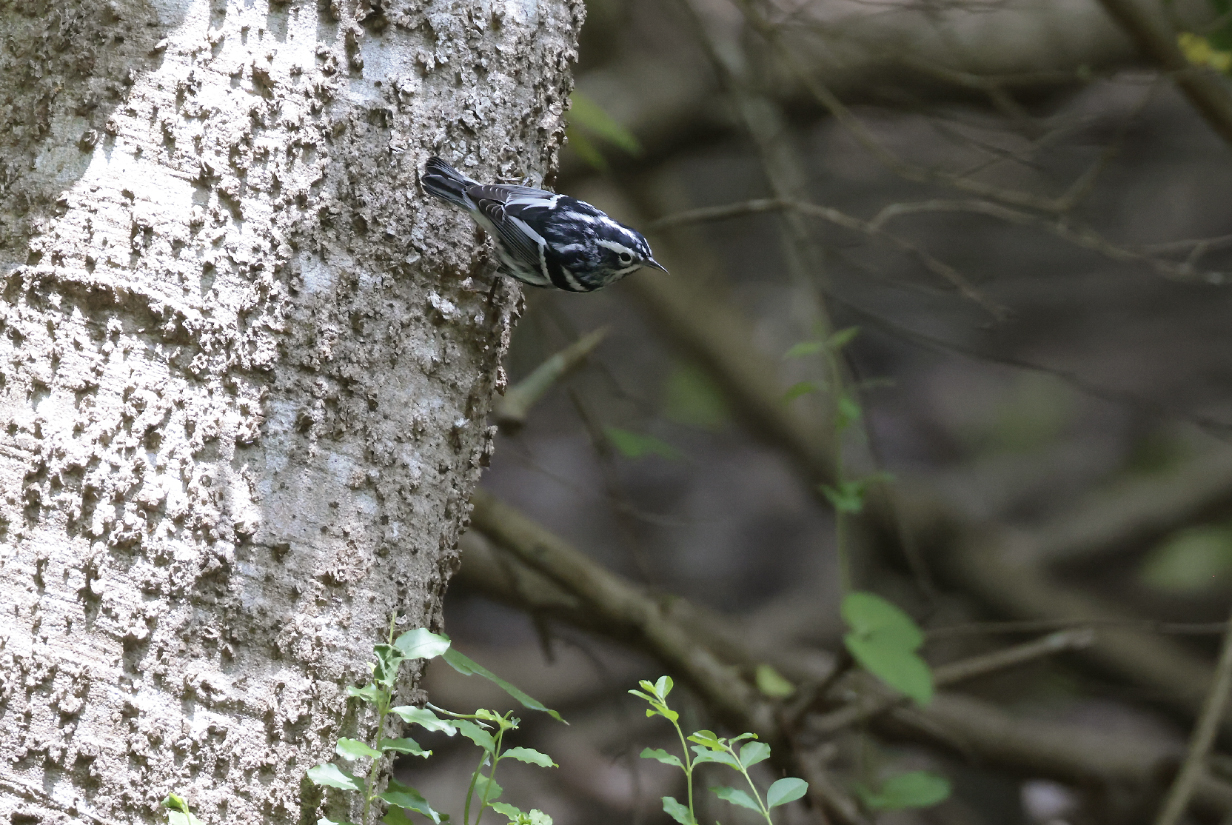
Black-and-white warbler (seen often during the trip)
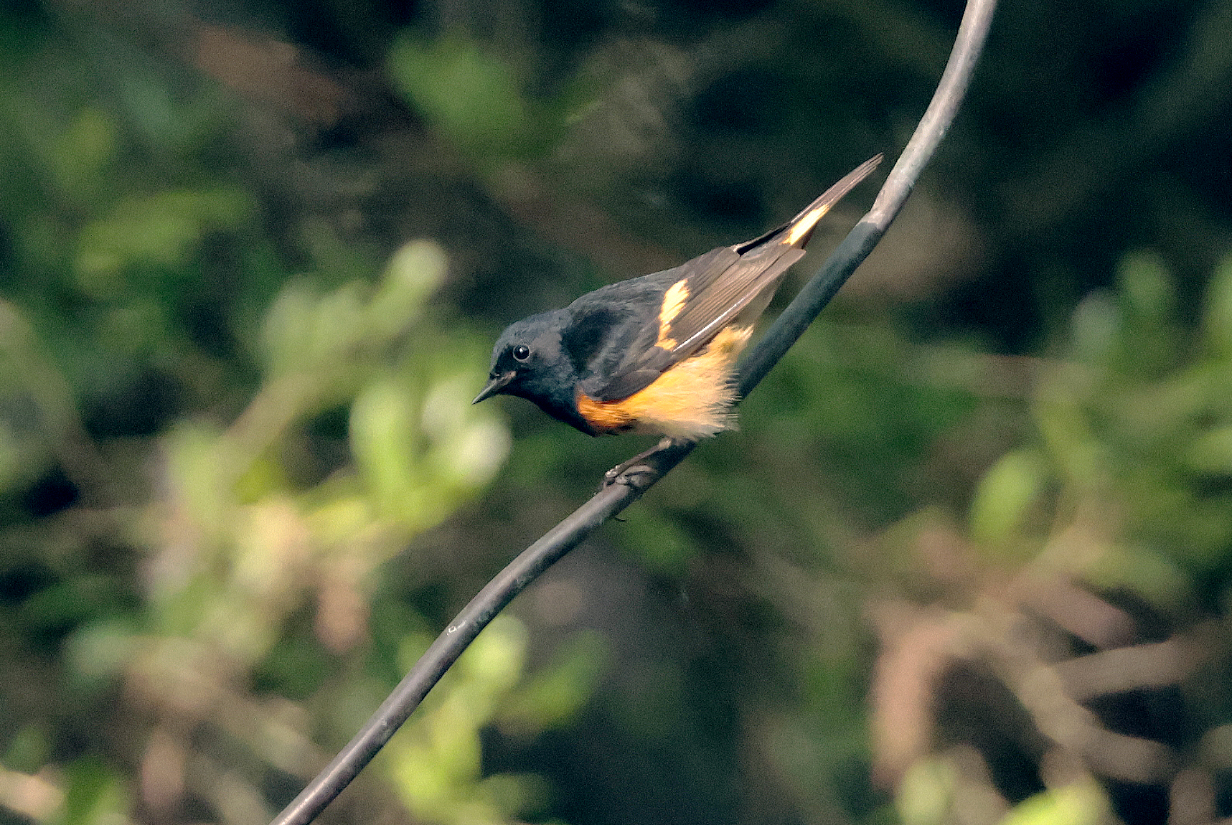
American redstart (male, on the drip pipe)
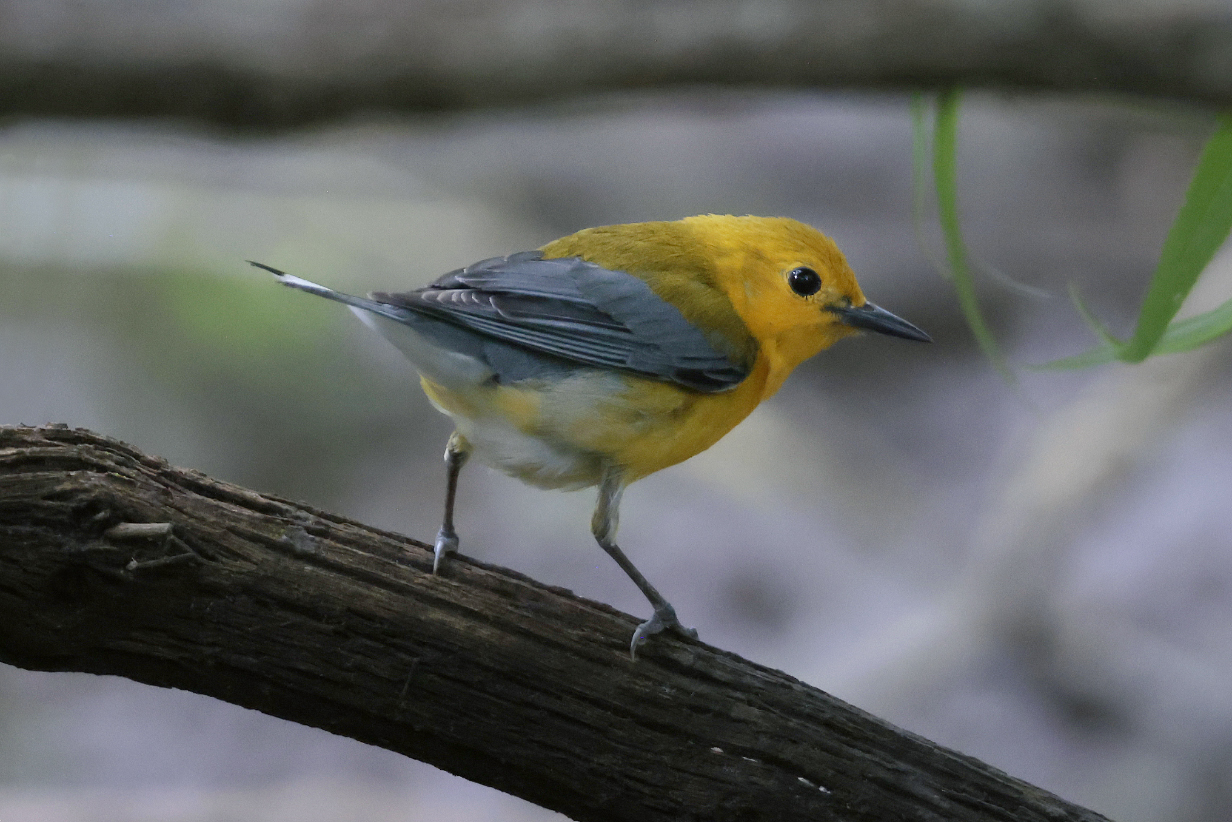
Prothonotary warbler (scarcer than usual, this year)
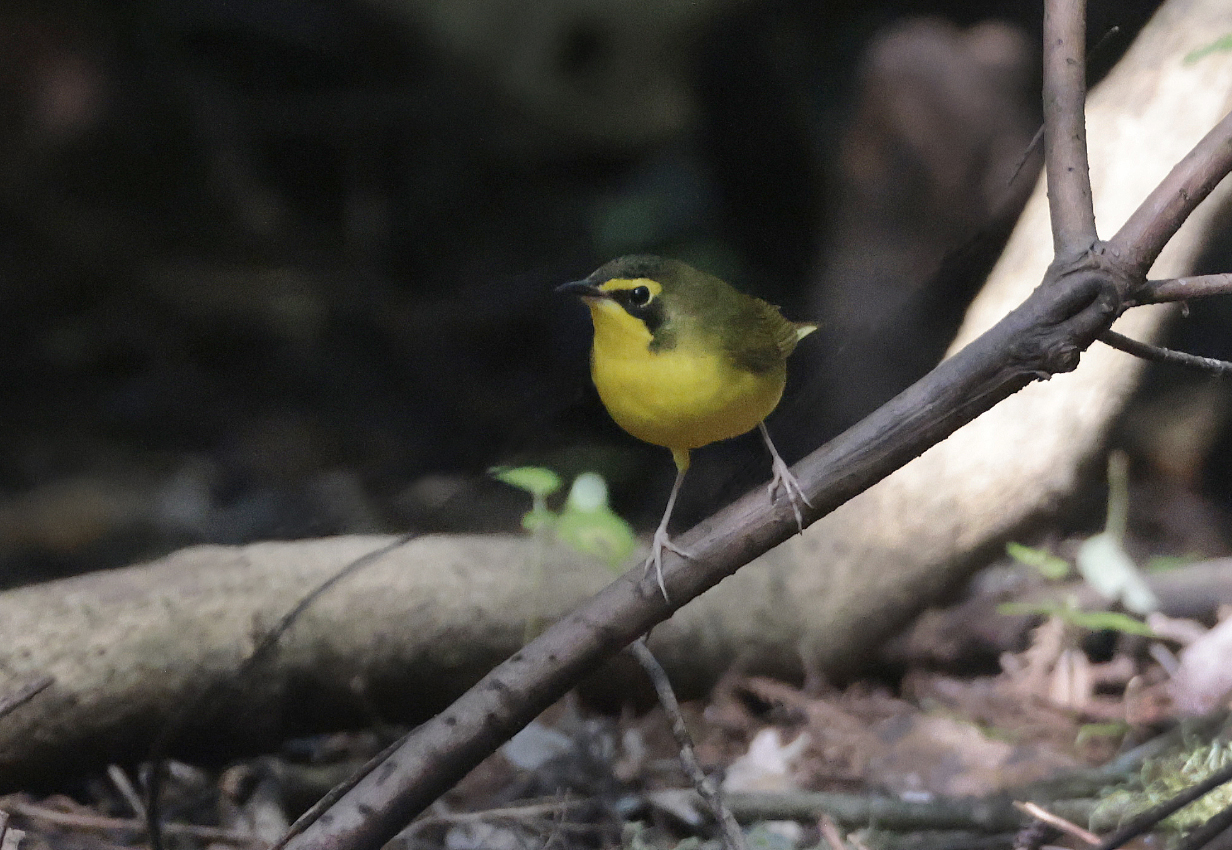
Kentucky warbler
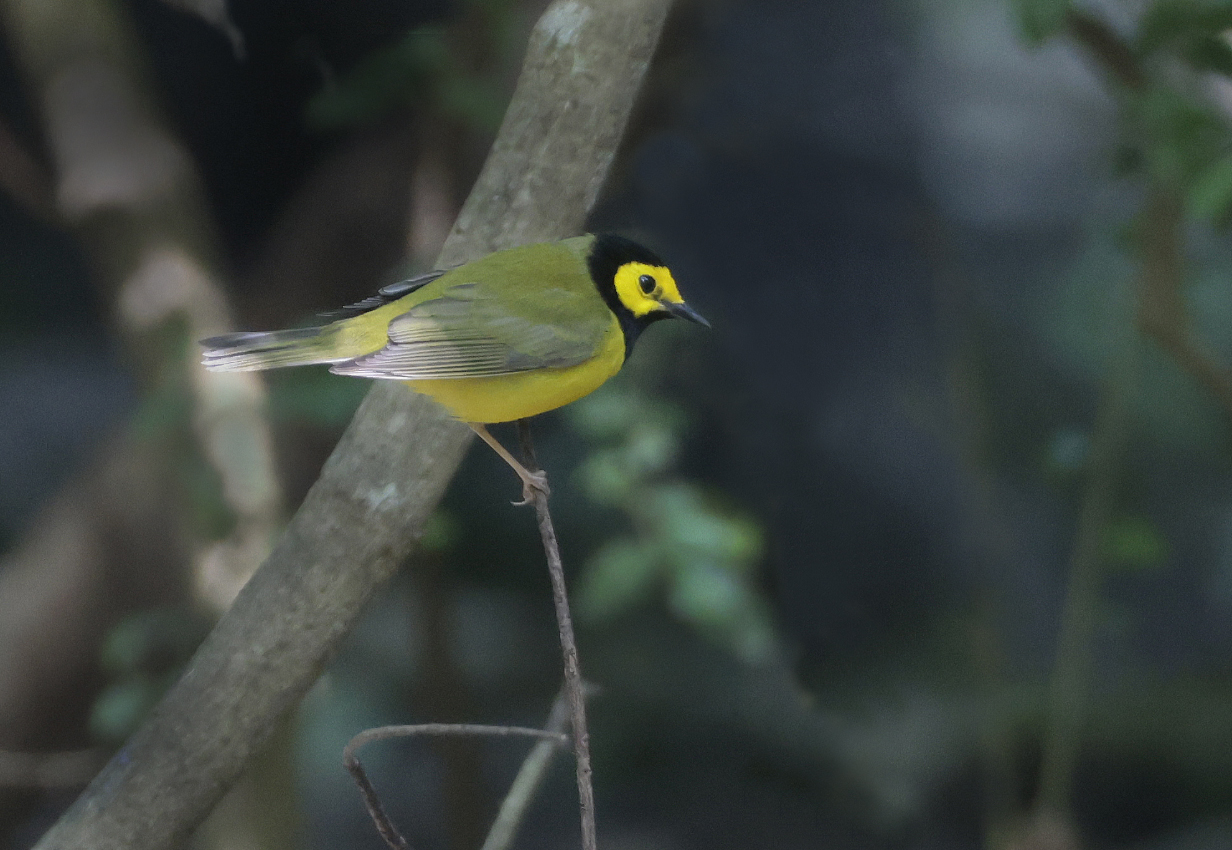
Hooded warbler (male)
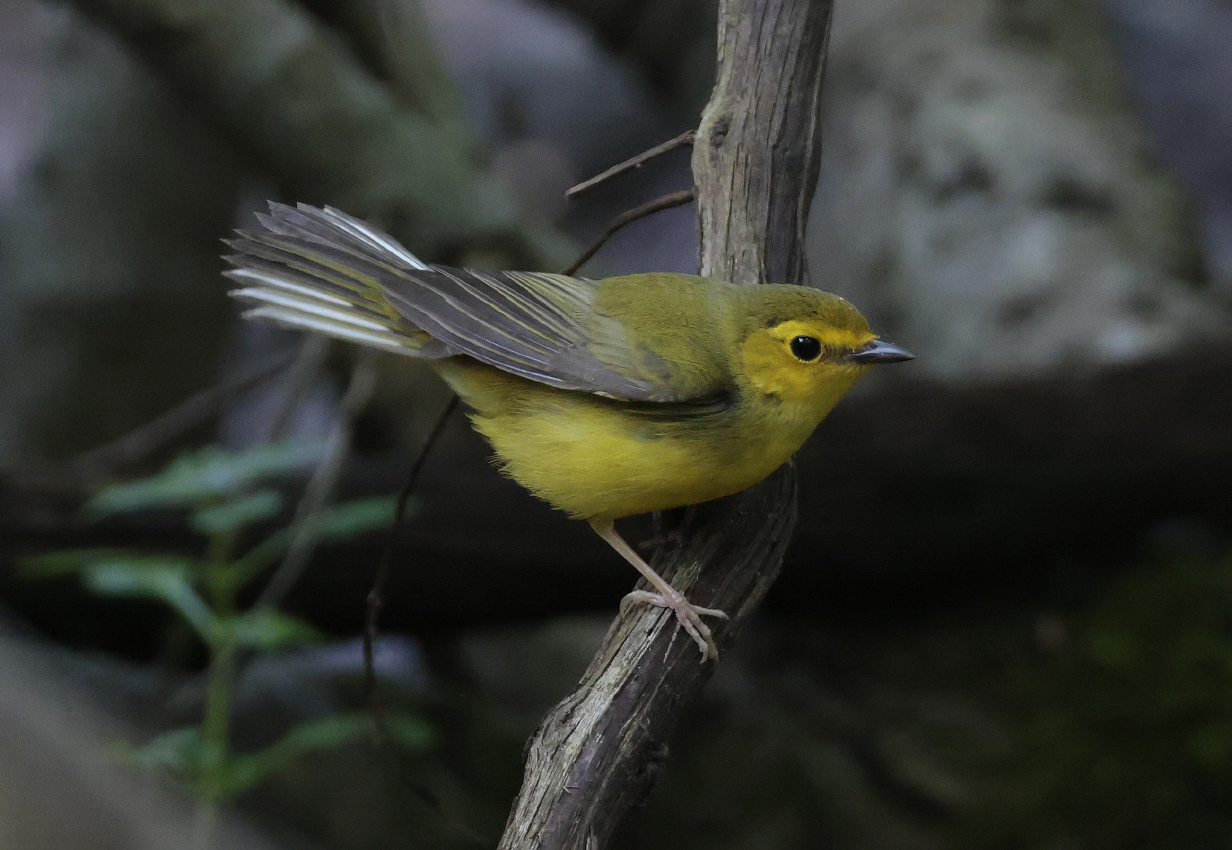
Hooded warbler (female)
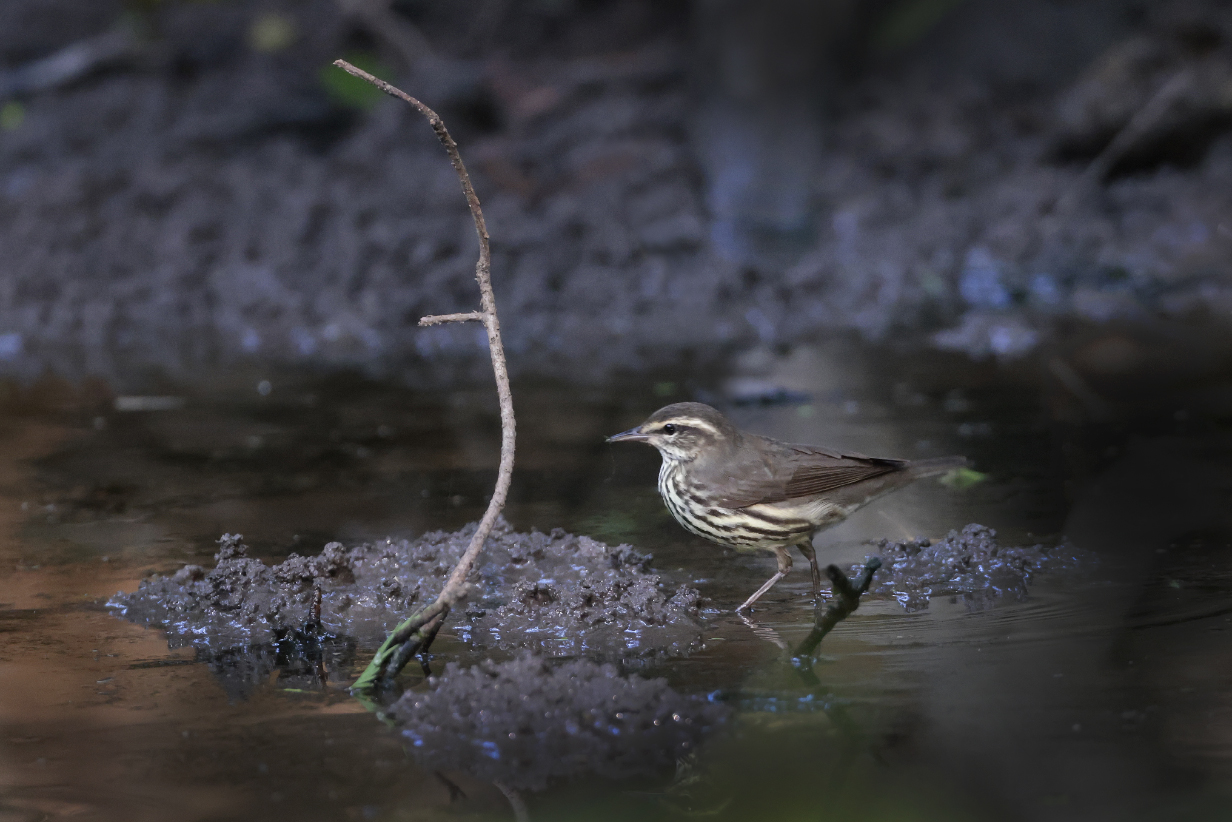
Northern waterthrush (ubiquitous at the drip area of Boy Scout Woods, this year)
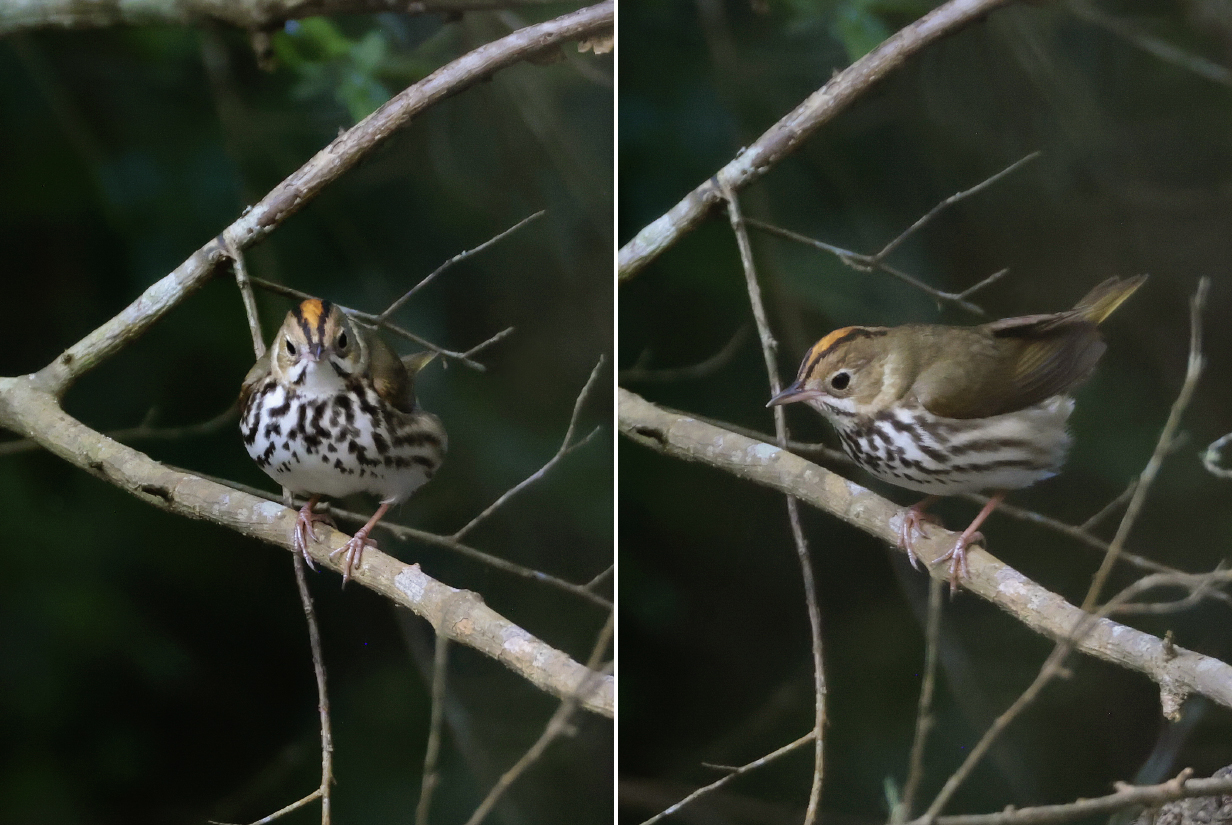
Ovenbird
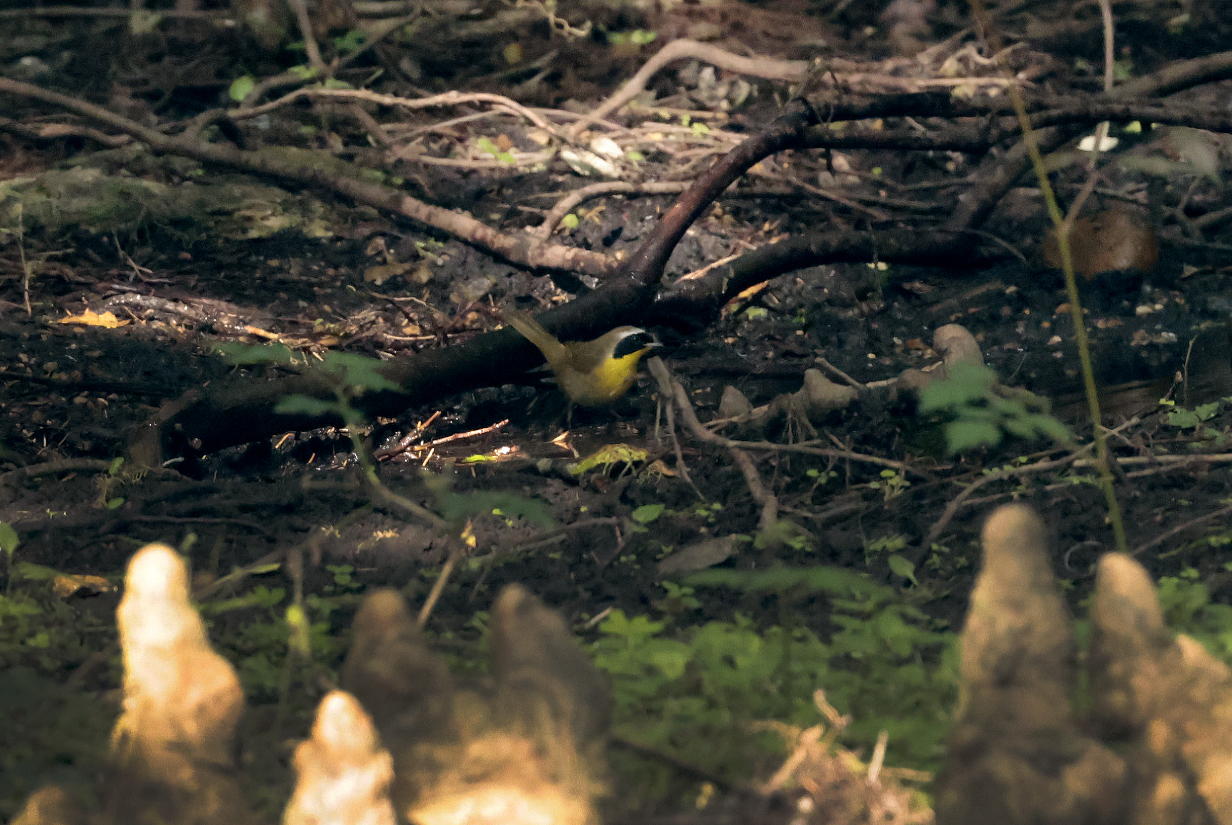
Common yellowthroat (This is the worst warbler picture of the trip. We saw the bird only once, at the drip at Boy Scout Woods and at a time when I had only a 500 mm telephoto with me.)
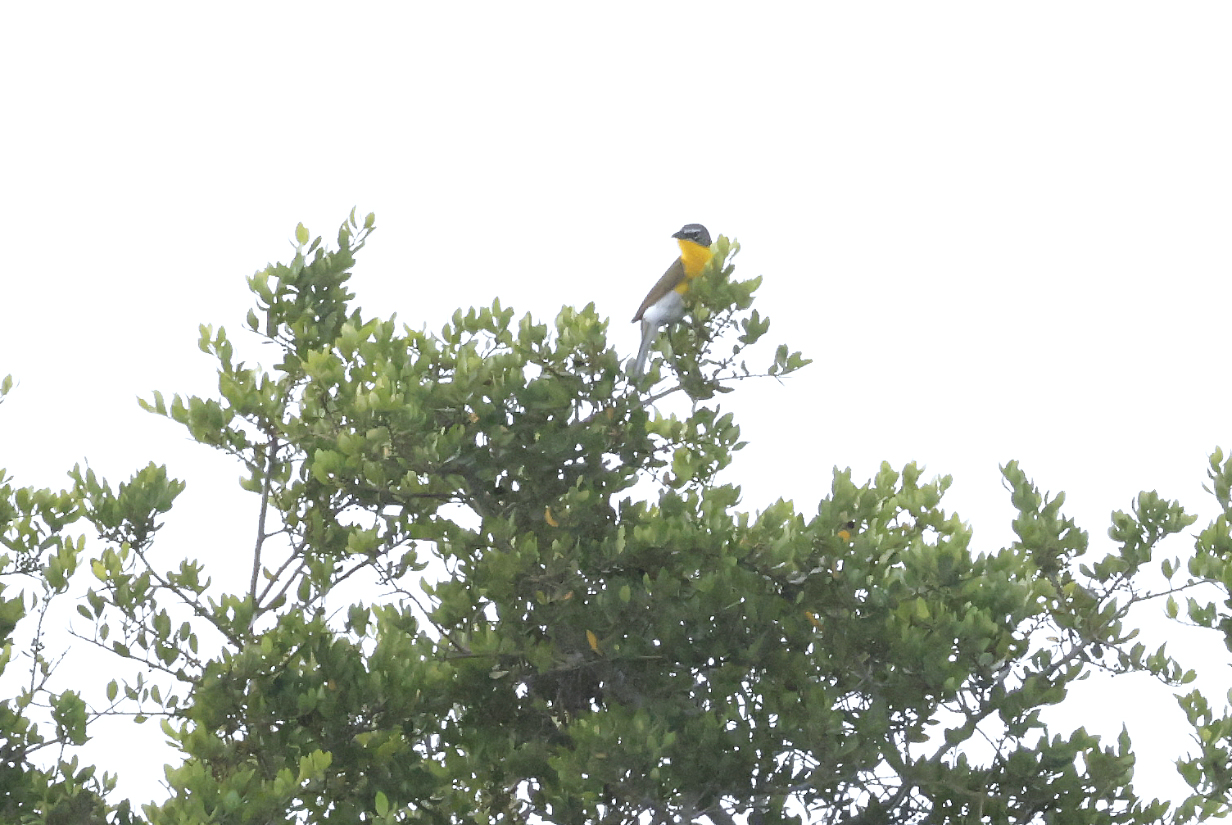
Yellow-breasted chat (This picture will win no prize for quality ... but seeing the bird at all was something of a triumph. I took the last guided walk of the season at Boy Scout Woods: The guides emphasized how rarely they got to see this skulker. For them -- and for me -- it was the "bird of the day" (April 27, 2025). It is traditionally considered to be a warbler, but genetic studies show that it is more closely related to Icterids (New World blackbirds and orioles). The latin name now is Icteria virens.
End of the Warblers
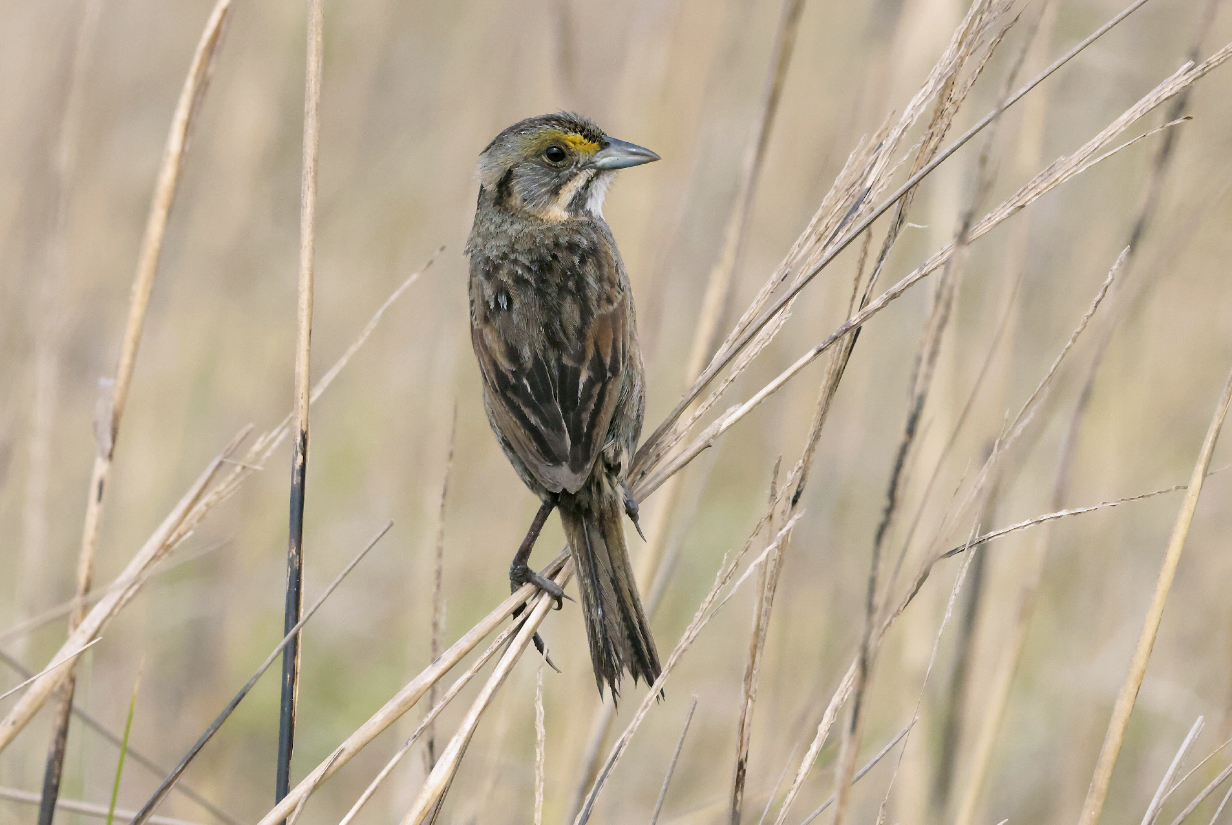
Seaside sparrow (We saw dozens in reeds along North Tuna Drive on the inland waterway side of the Bolivar Penninsula.)
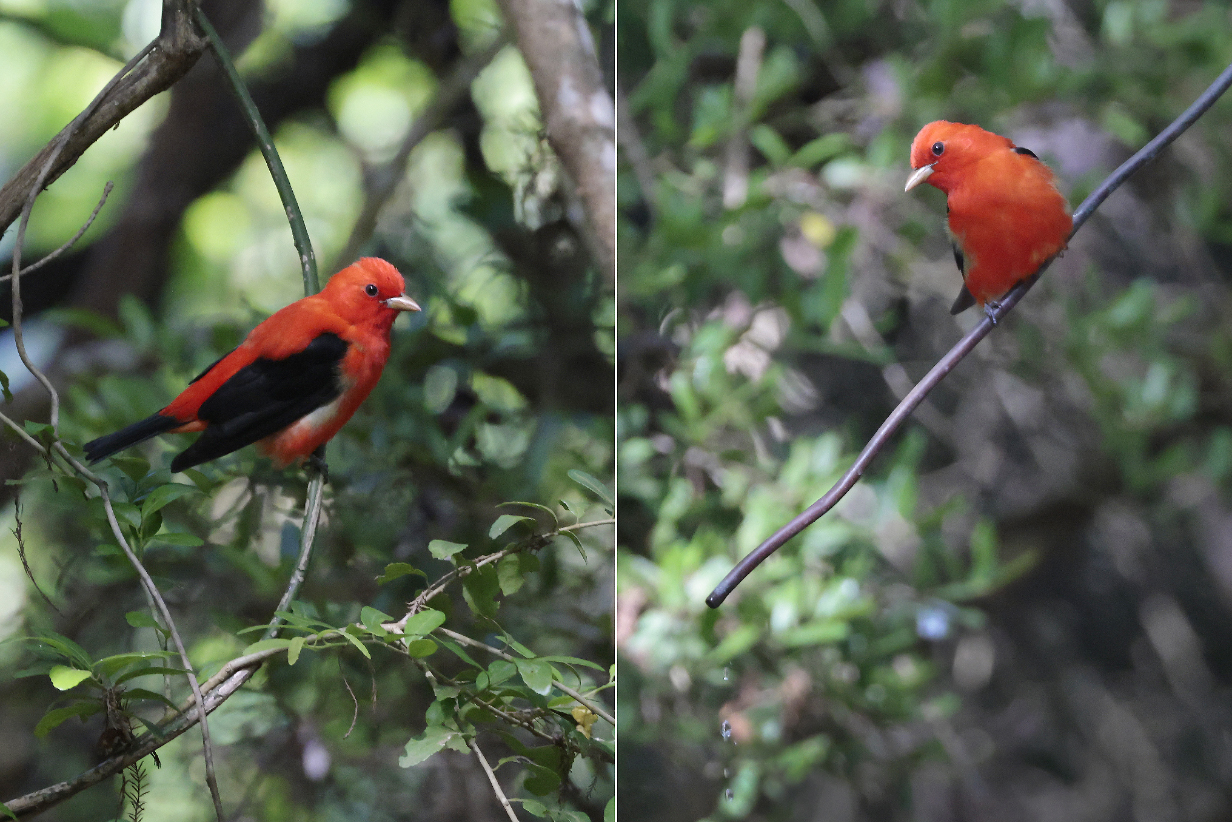
Scarlet tanager male approaching and on the drip pipe
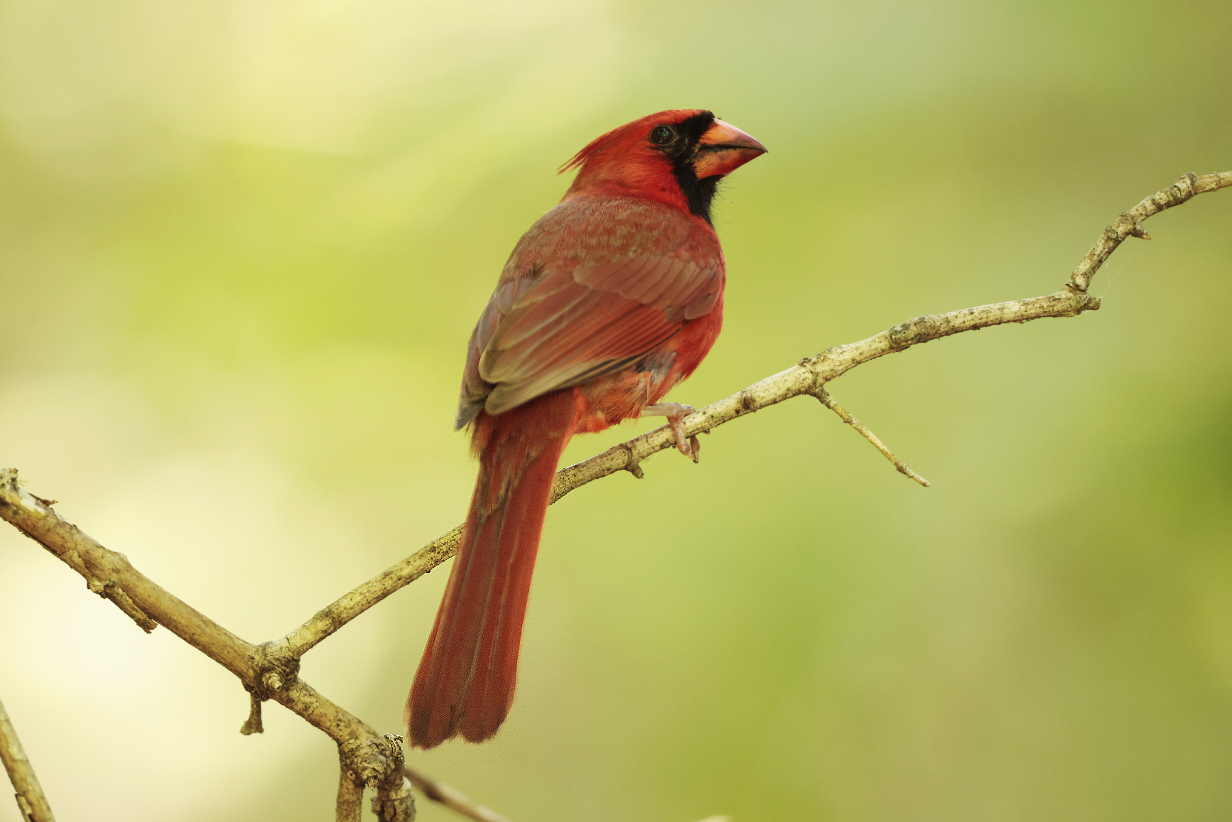
Northern cardinal was definitively the second-most-common bird at the drip in Boy Scout Woods and the noisiest bird in the forest.
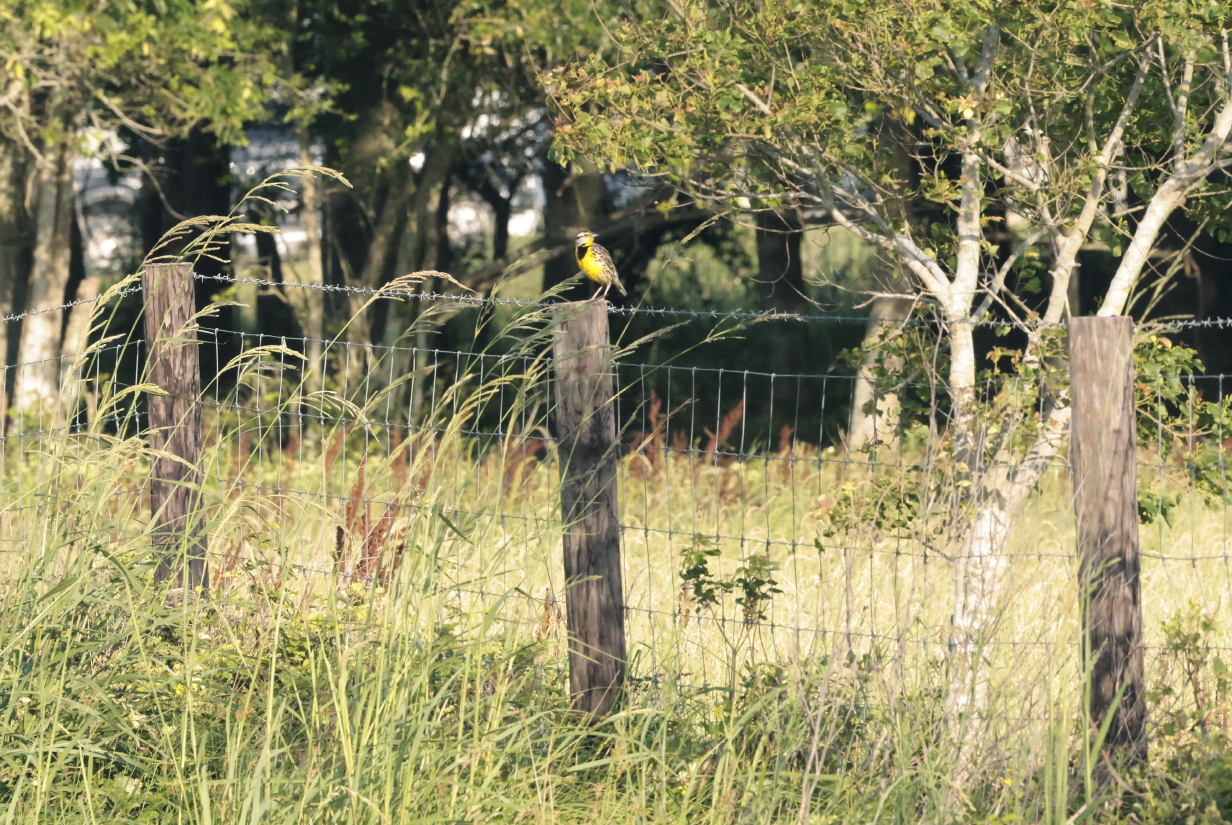
Dickcissel (This is not an easy bird to find near High Island. A location was posted at Boy Scout Woods, in dry grasses along South Fig Road, about 5 miles south of Winnie. The road is public ... but the locals were conspicuously unfriendly to birders. Ferocious focus on the privateness of private property is a Texas tradition.)
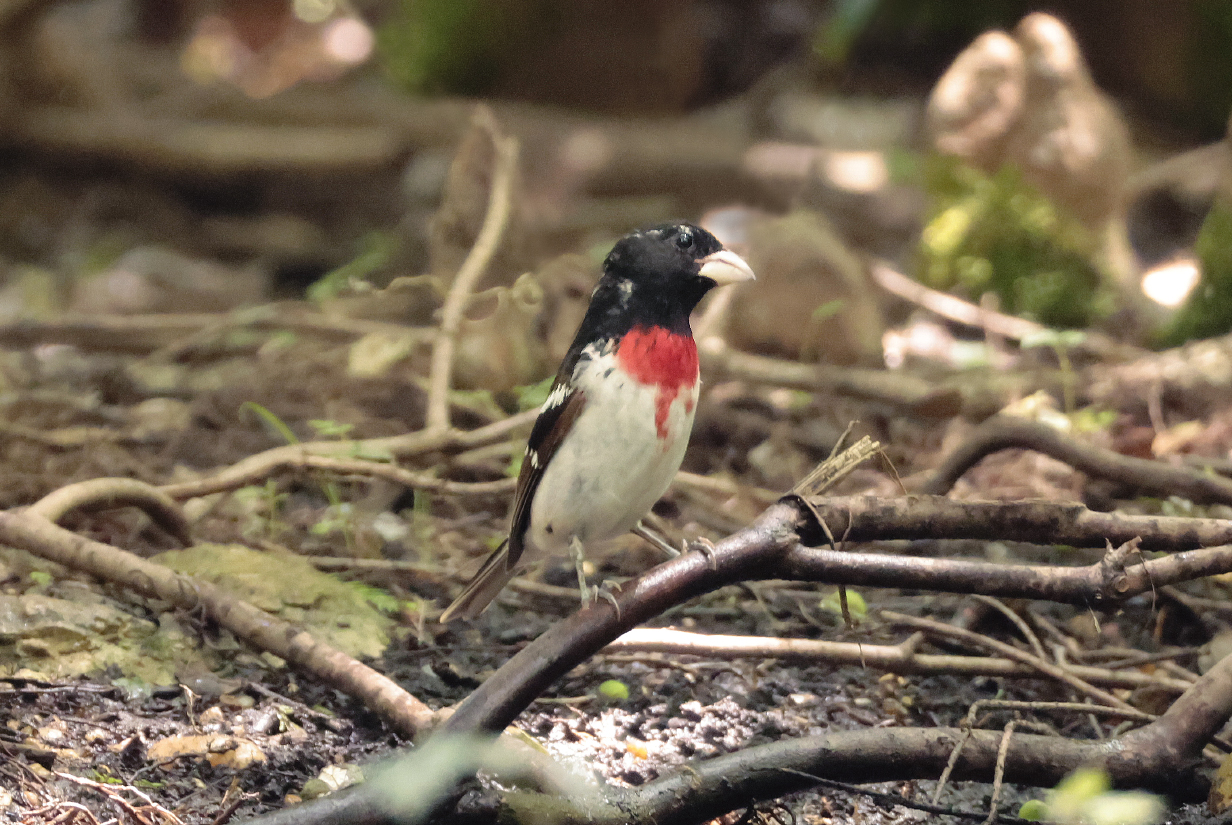
Rose-breasted grosbeak male (Some years, we get great looks. This was not one of them.)
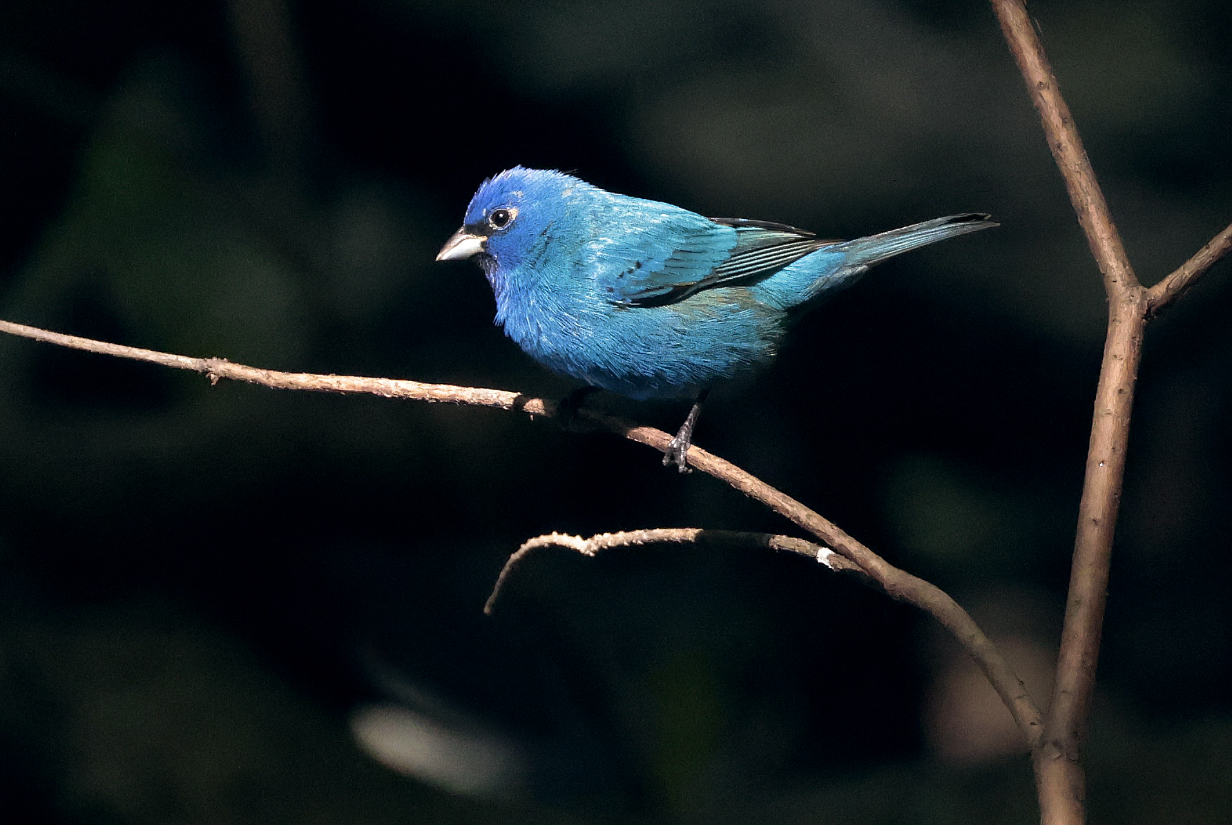
Indigo bunting (male, approaching the drip at Boy Scout Woods)
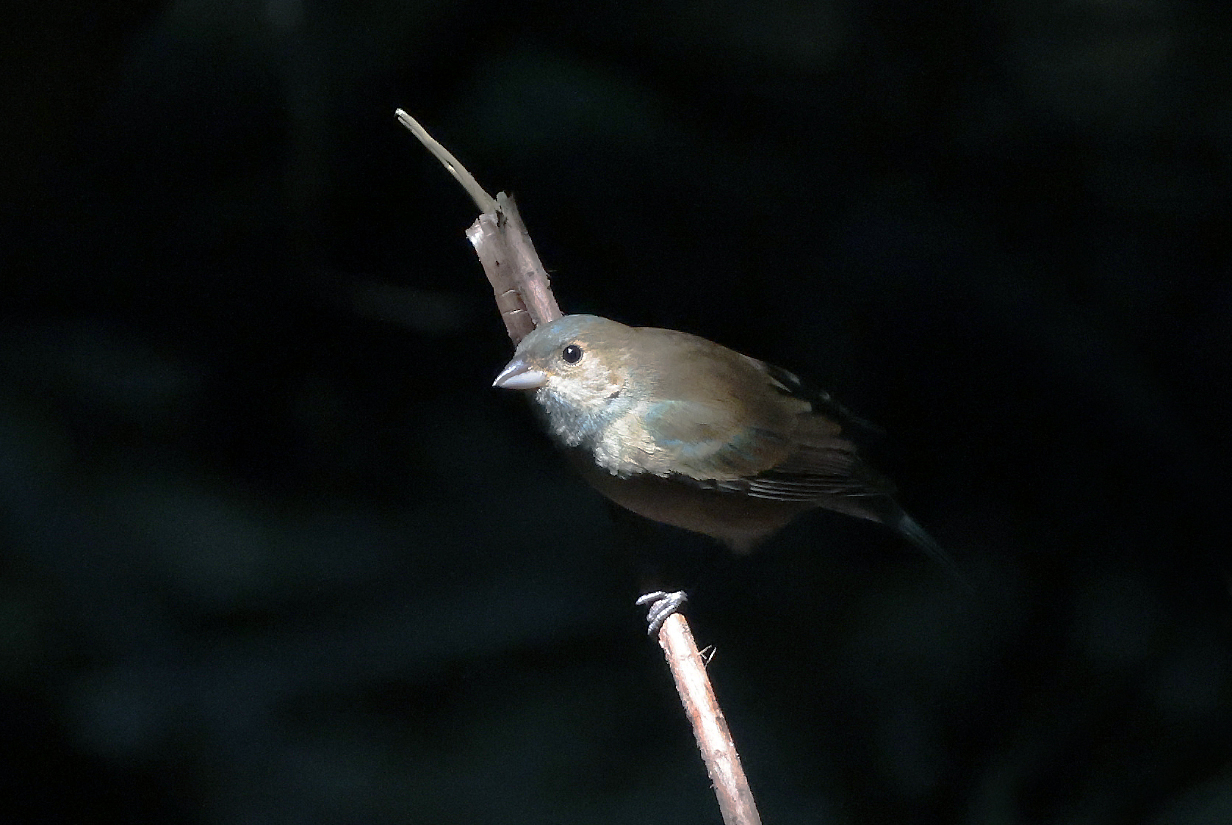
Indigo bunting (juvenile)

Painted bunting male at the drip at Hook Woods, High Island
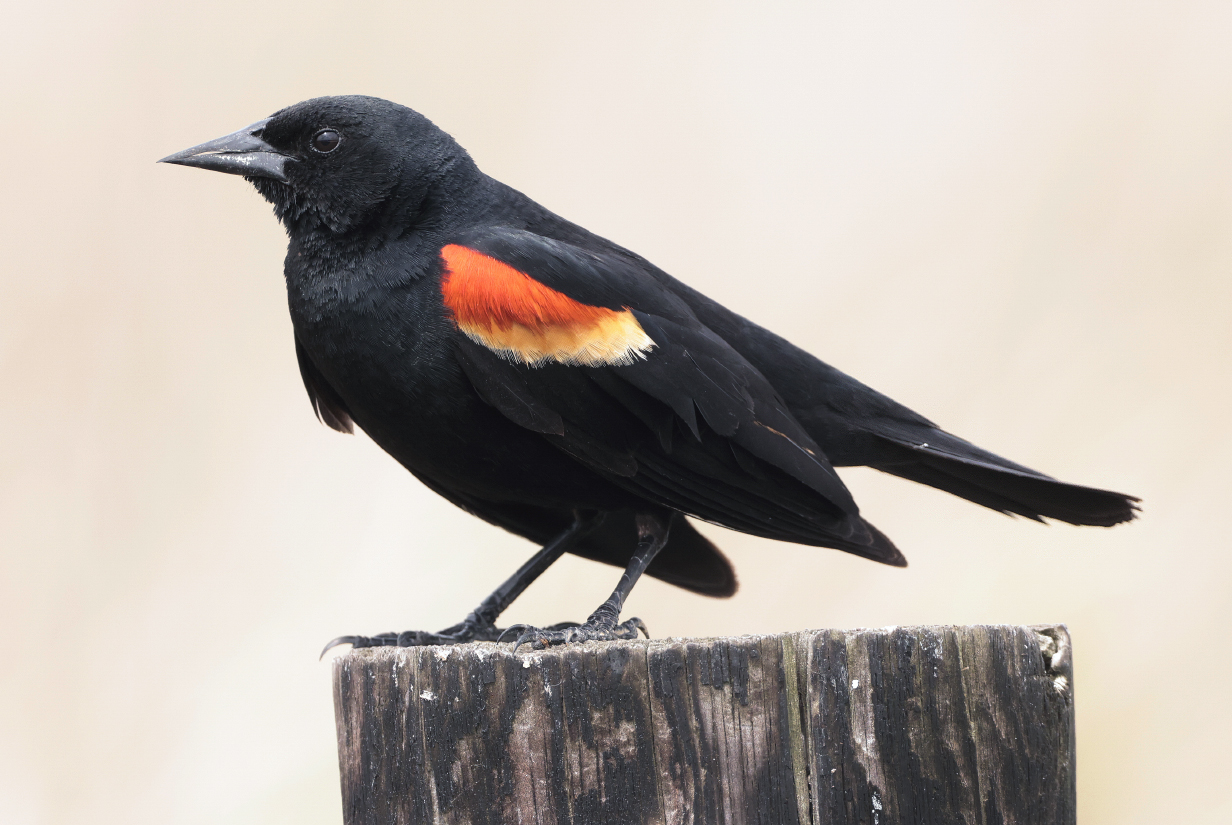
Red-winged blackbird male, here in breeding finery, is ubiquitous in the High Island area.
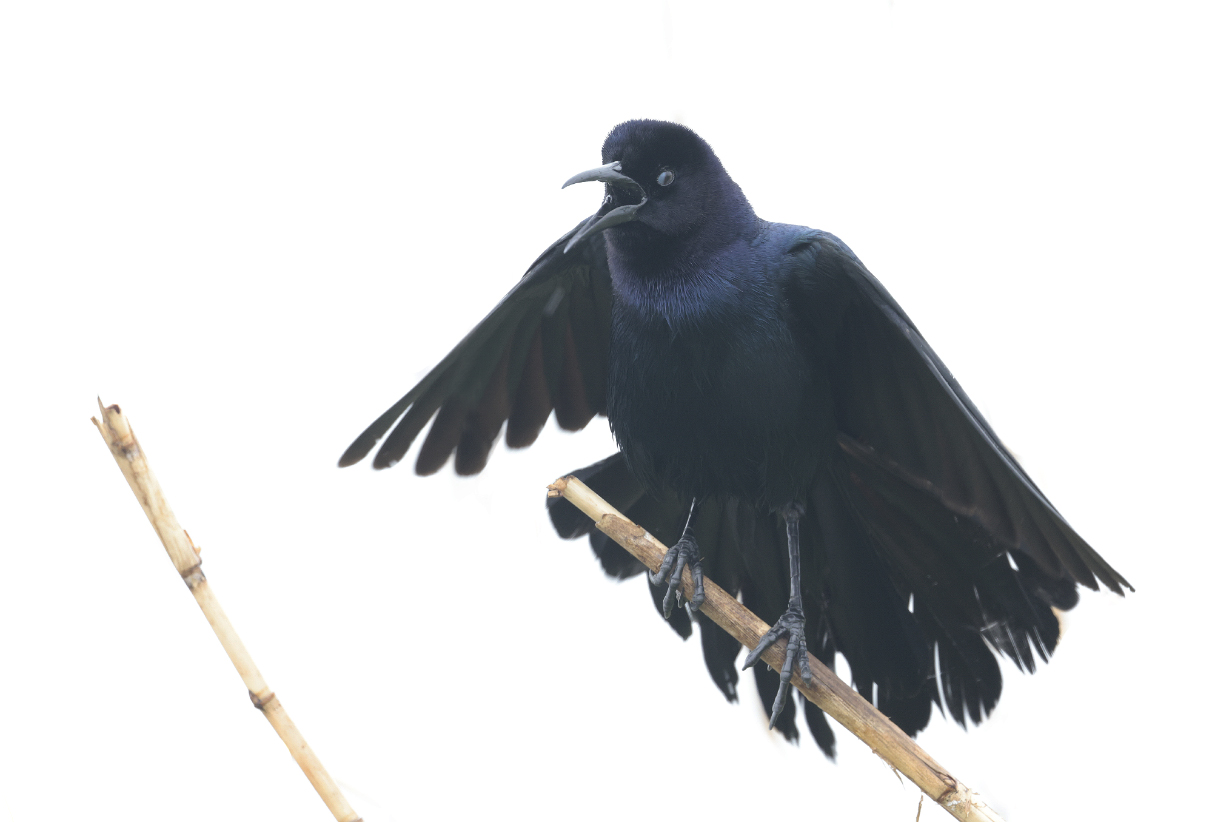
Boat-tailed grackle (O, Lordy: It's mating season!)
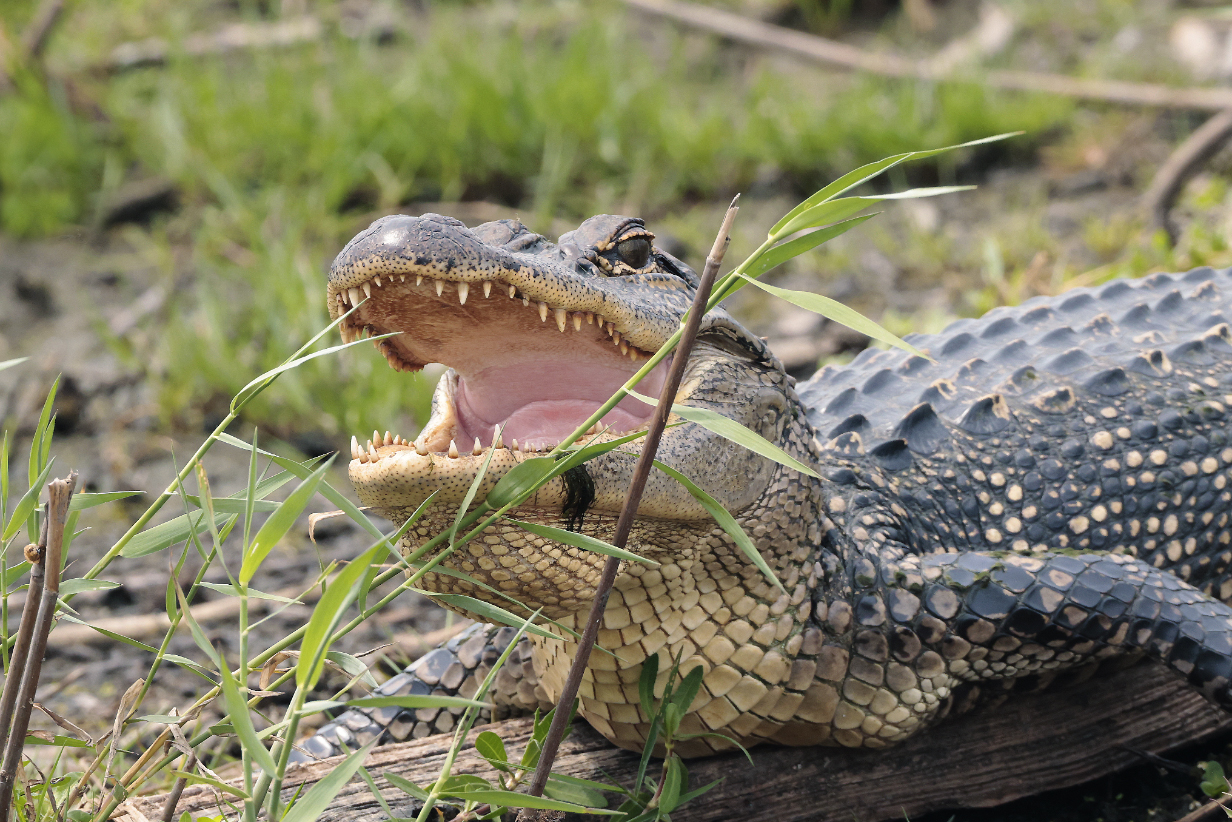
Lots of other wildlife at (formerly) Anahuac NWR. Risky to be a duck or moorhen, paddling around in deep water.
Our bird pictures from around the world follow standard ecozones approximately but not exactly:
Birds from the USA and Canada: our house, Hornsby Bend and greater Austin, Texas, California, Hawaii, Canada,
Neotropic birds from Central America and the Caribbean: Honduras, Costa Rica, Panama, Trinidad and Tobago
Neotropic birds from South America: Ecuador, Ecuador 2017, Brazil.
Western palearctic birds: Europe: Germany, Finland, Norway, Europe: United Kingdom, Europe: Spain, the Canary Islands, Europe: Lesbos, Greece, Israel
Eastern palearctic birds: China
Birds from Africa: The Gambia, South Africa
Indo-Malayan birds from India: North-west (Delhi, Uttar Pradesh, Uttarakhand) India: North-east (Assam, Arunachal Pradesh, Meghalaya) India: Central (Maharashtra, Madhya Pradesh)
Birds from Australia, New Zealand.
For our 2014 December trip to India, see this travelog.
For our 2016 May-June trip to India, see this travelog.
For our 2017 April trip to High Island, Texas, see this web site.
For our 2018 March trip to India, see this travelog.
For our 2018 May trip to China, see this travelog.
For our 2018 October trip from Munich to Budapest, Hungary see this travelog.
For our 2018 November trip to China, see this travelog.
For our 2019 April trip to High Island, Texas, see this web site.
For our 2019 July trip to China, see this travelog.
For our 2021 April trip to High Island, Texas, see this web site.
For the 2021 August 3 & 4 migration of Purple martins through Austin, see this web site.
For our 2021 December trip to Ecuador, see this web site.
For our 2022 January-February trip to Peru, see this web site.
For our 2022 July/August trip to Australia and Papua New Guinea, see this web site.
For our 2022 September trip to Bolivia, see this web site.
For our 2022 November-December pre-trip to Argentina (before our Antarctic cruise), see this web site.
For our 2022 November-December cruise to Antarctica, see this web site.
For our 2023 January birding in Chile, see this web site.
For our 2023 January-March cruise from Chile to Antarctica and around South America to Miami, FL, see this web site.
For our 2023 March-April birding in south Florida (after the Seabourn cruise), see this web site.
For our 2023 November-December birding to Sri Lanka, the Andaman Islands, and South India, see this web site.
For John's 2024 February-March birding in Colombia, see this web site.
For our 2024 May-June cruise from Iceland to Jan Mayen Island to and around the Svalbard Archipelago, see this web site.
For our 2024 June 25-30 stay in Paris, see this web site.
For our 2025 April 21 - May 3 trip to High Island, Texas, see the present web site.